Classic Photos of Bart Starr
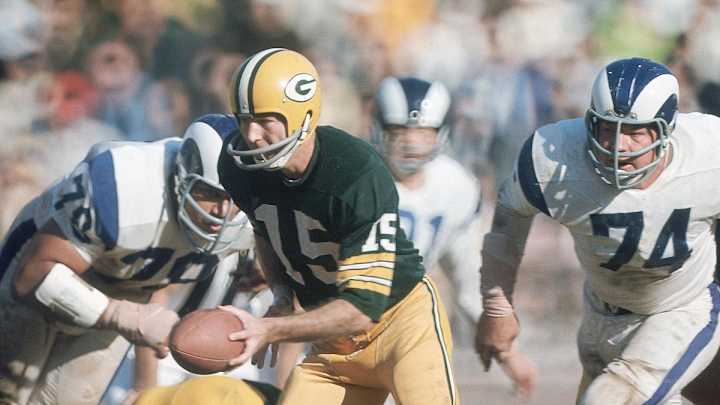
Classic Photos of Bart Starr
1961
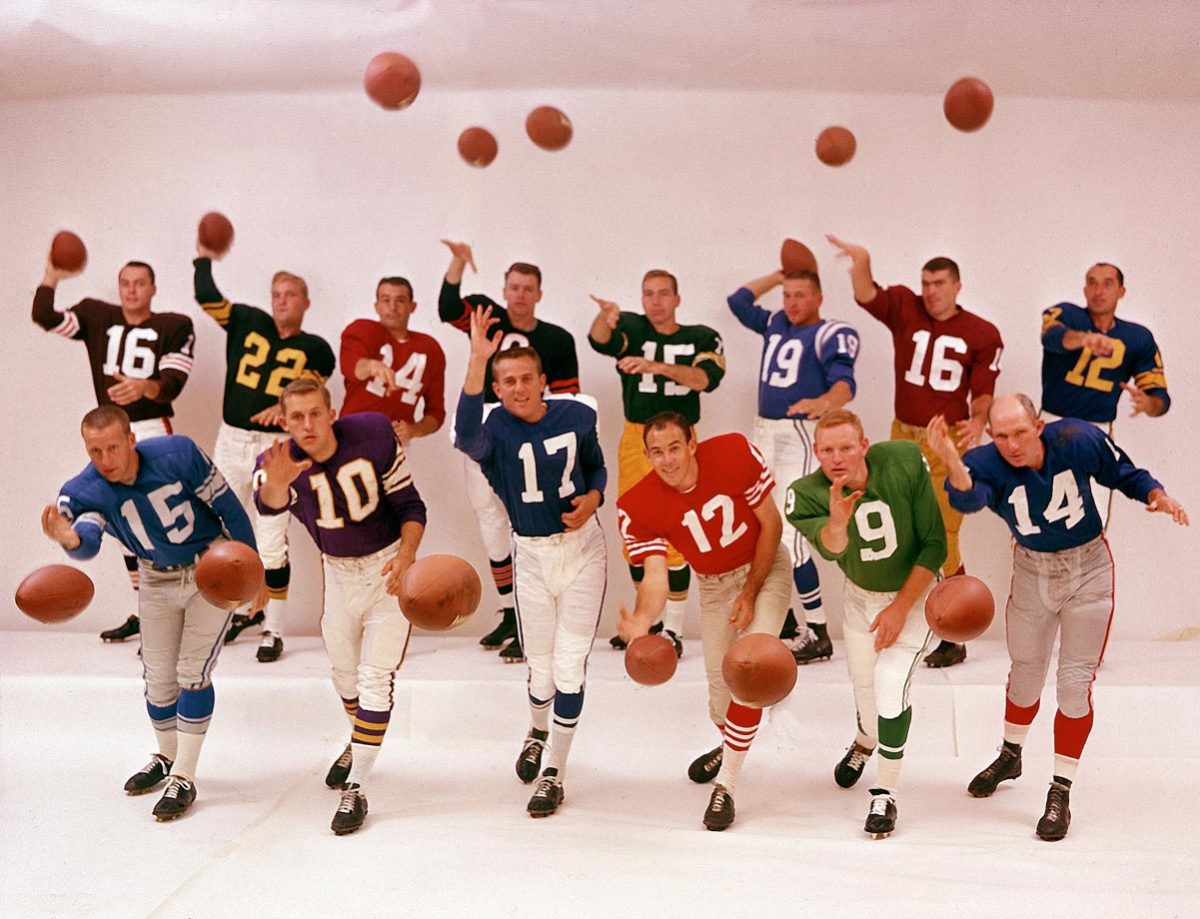
Bart Starr (back row, No. 15) was among this amazing 1961 gathering of every starting quarterback in the NFL (no way that happens in today's world). The group consisted of (front, L-R) Jim Ninowski, Fran Tarkenton, Don Meredith, John Brodie, Sonny Jurgensen, Y.A. Tittle; (back, L-R) Milt Plum, Bobby Layne, Sam Etcheverry, Bill Wade, Starr, Johnny Unitas, Norm Snead and Zeke Bratkowski. (Text credit: Shannon Carroll)
1961
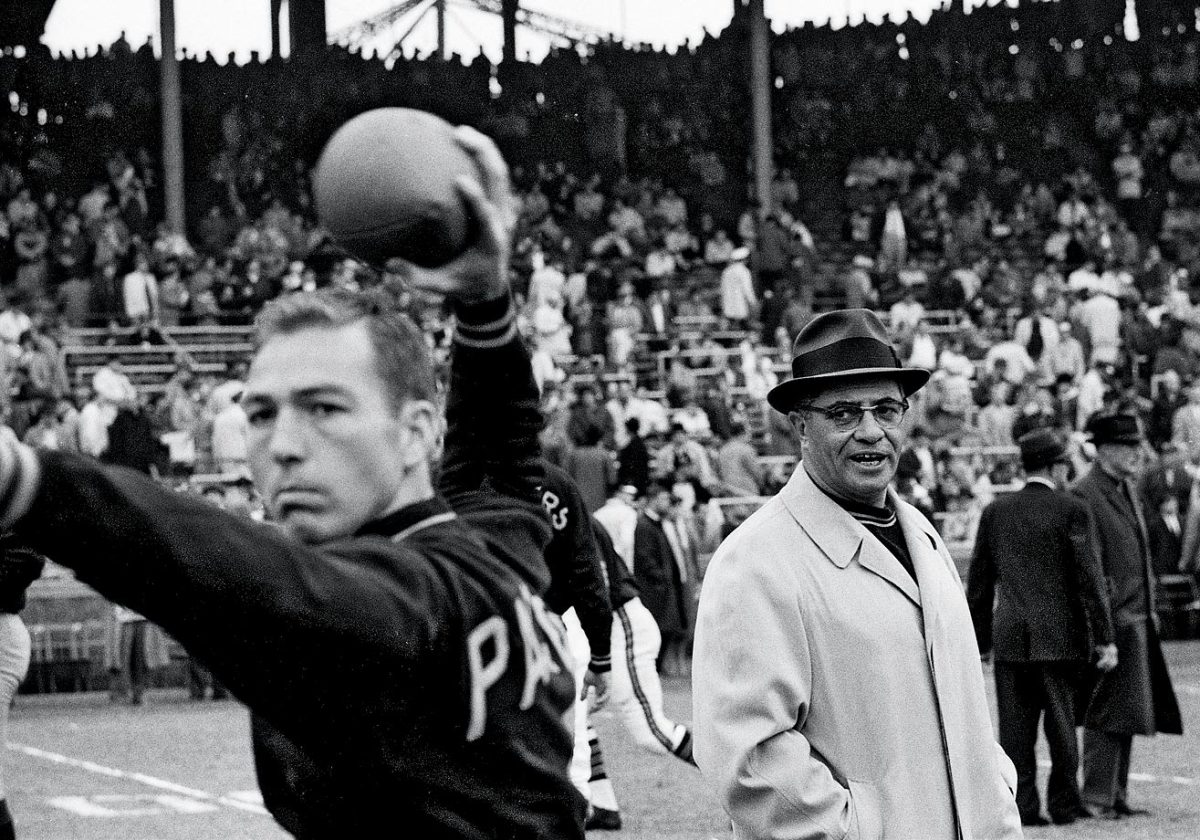
Bart Starr has said that the reason he is in the Hall of Fame is because of his coach, Vince Lombardi, who became the Packers top man three years after Starr entered the league. Together, they won Super Bowl I and Super Bowl II; Starr was the MVP of the game both times. (Text credit: Shannon Carroll)
1961
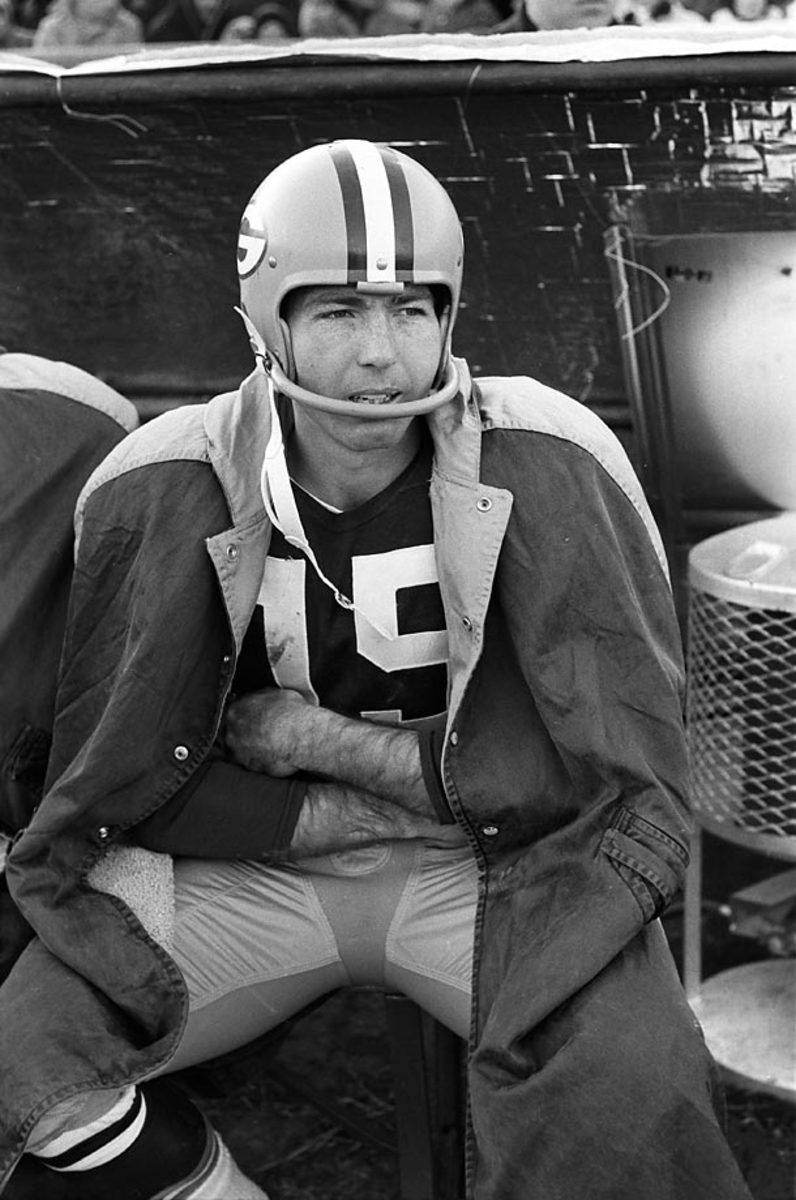
Pictured here on the sidelines during the 1961 NFL Championship Game, Bart Starr helped lead his team to a 37-0 victory over the New York Giants at City Stadium in Green Bay, Wisc. (Text credit: Shannon Carroll)
1962
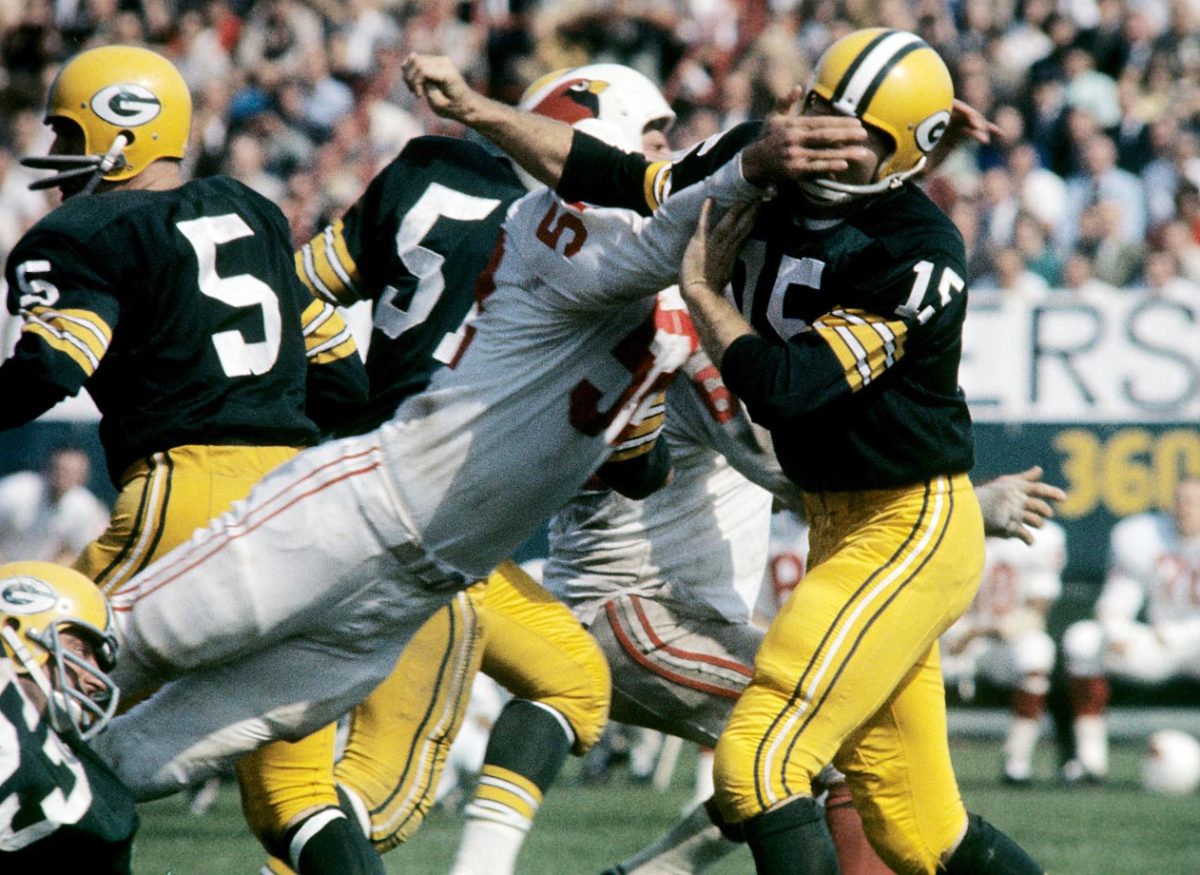
A 17th-round pick in 1956 out of Alabama, Starr began his career for the Packers on the bench and stayed there until 1959, when Lombardi took over as the Packers coach. That season, Lombardi pulled Lamar McHan in favor of Starr, and the change stuck. (Text credit: Shannon Carroll)
1962
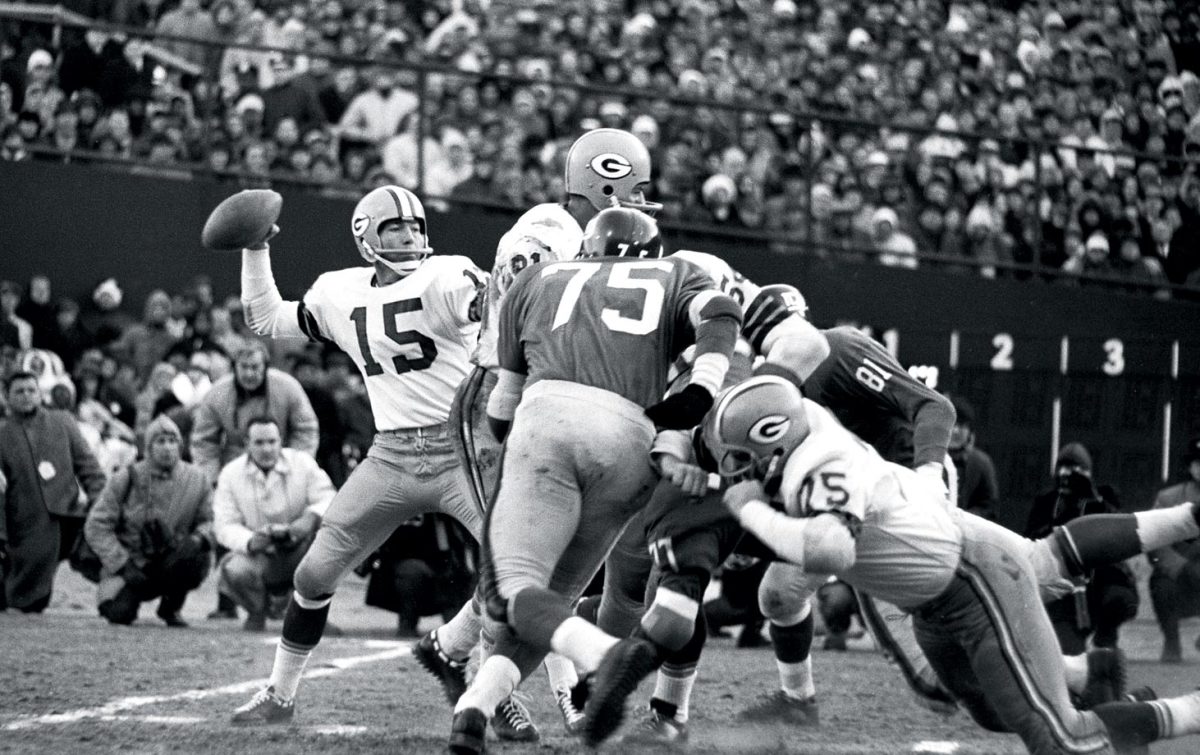
Before joining the Packers, Bart Starr played his college ball at Alabama, and it was the Crimson Tide's basketball coach, Johnny Dee—a friend of Packers personnel director Jack Vainisi—who touted Starr as a pro prospect. The Packers saw a quarterback with tremendous potential and selected him in the 17th round of the 1956 NFL Draft with the 200th pick. (Text credit: Shannon Carroll)
1962
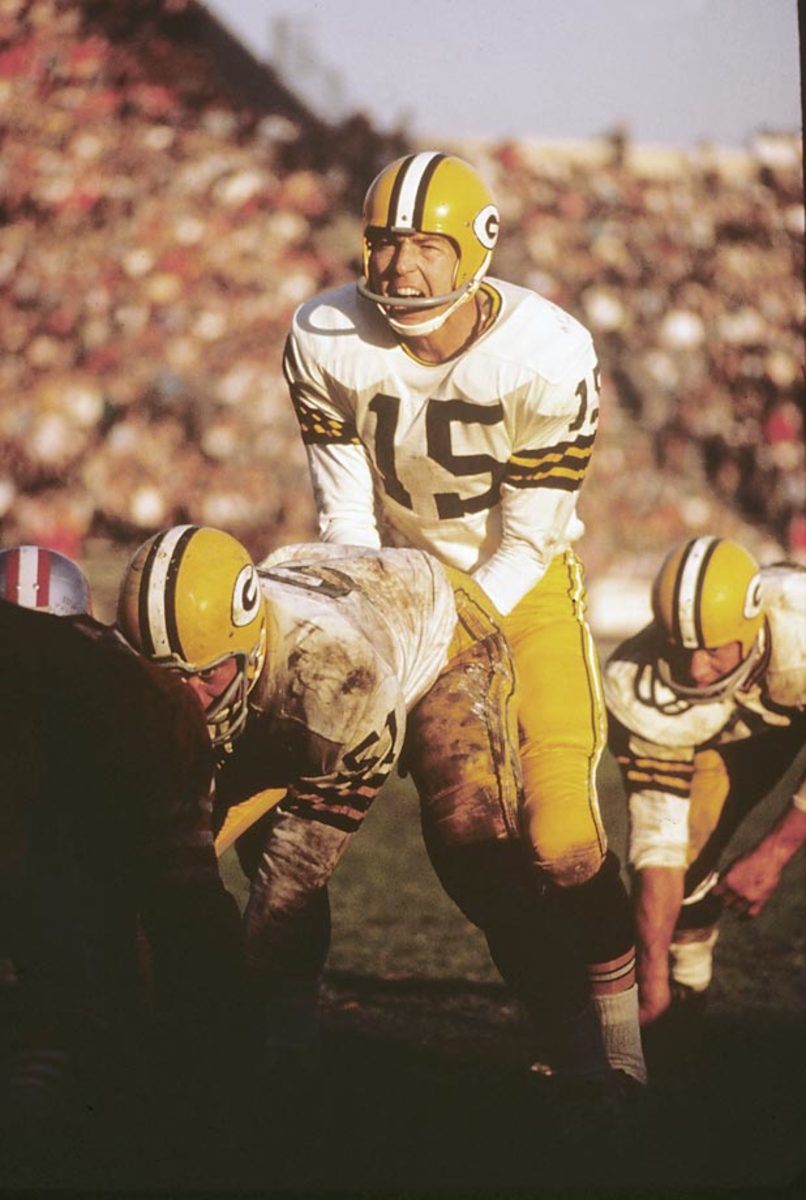
In the 1962 season, Bart Starr had his highest passer rating (90.7) and pass completion percentage (62.5, the best of his career), as well as the lowest interception percentage (3.2). (Text credit: Shannon Carroll)
1962
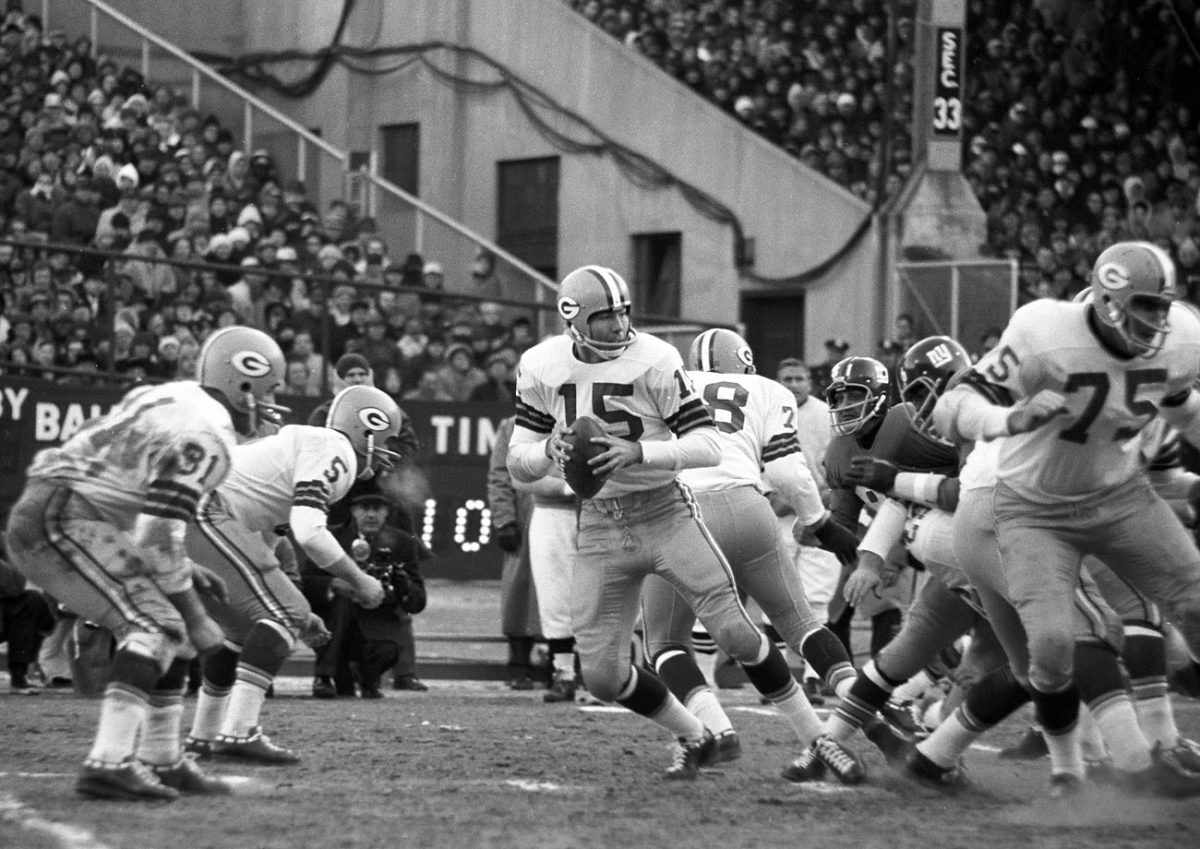
In the 1962 title game against the Giants (a rematch of the 1961 championship game), the weather was terrible. Starr noted, "Several times we noted that the benches on the sideline, those heavy benches that they sat on over there, they were blown over during the course of the game." TV crews made bonfires to thaw out their cameras, and one cameraman suffered frostbite. (Text credit: Shannon Carroll)
1962
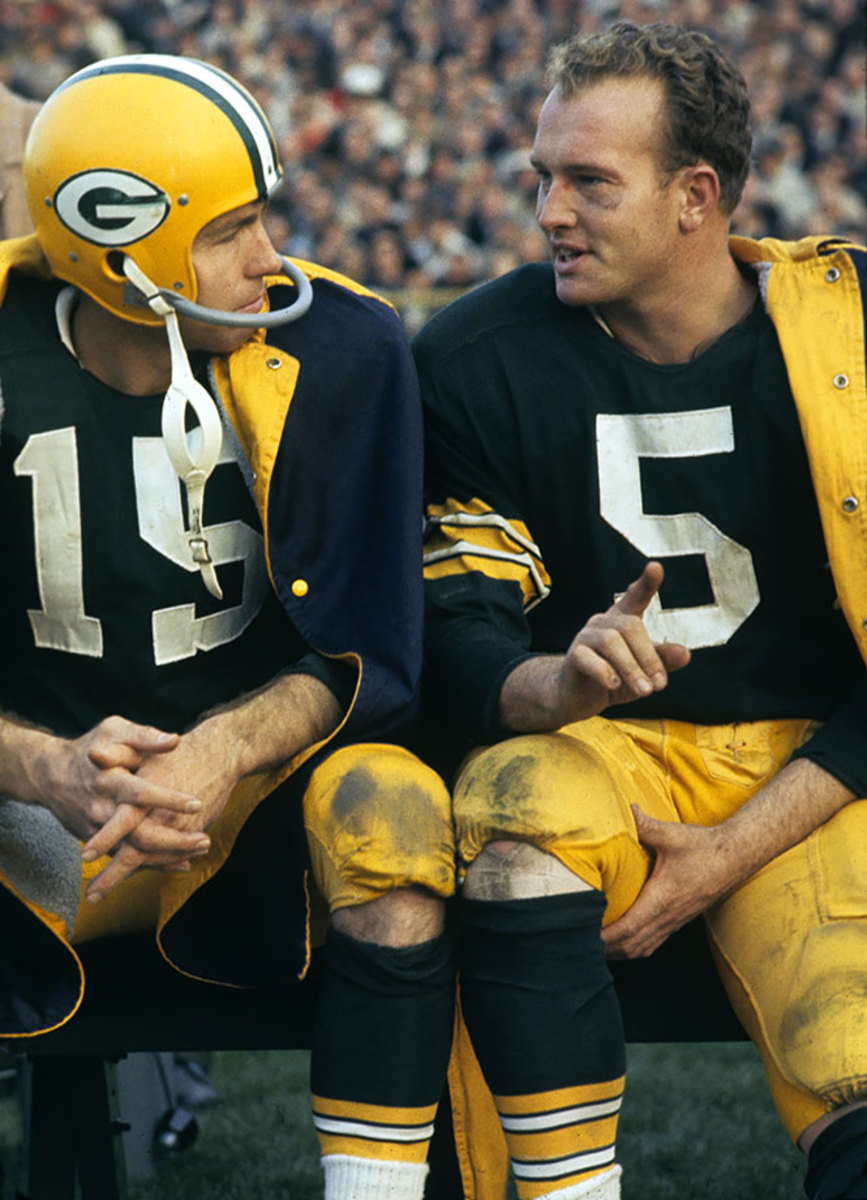
Bart Starr and Paul Hornung both won MVP honors during their careers and were two of the key figures in the Packers' success. (Text credit: Shannon Carroll)
1963
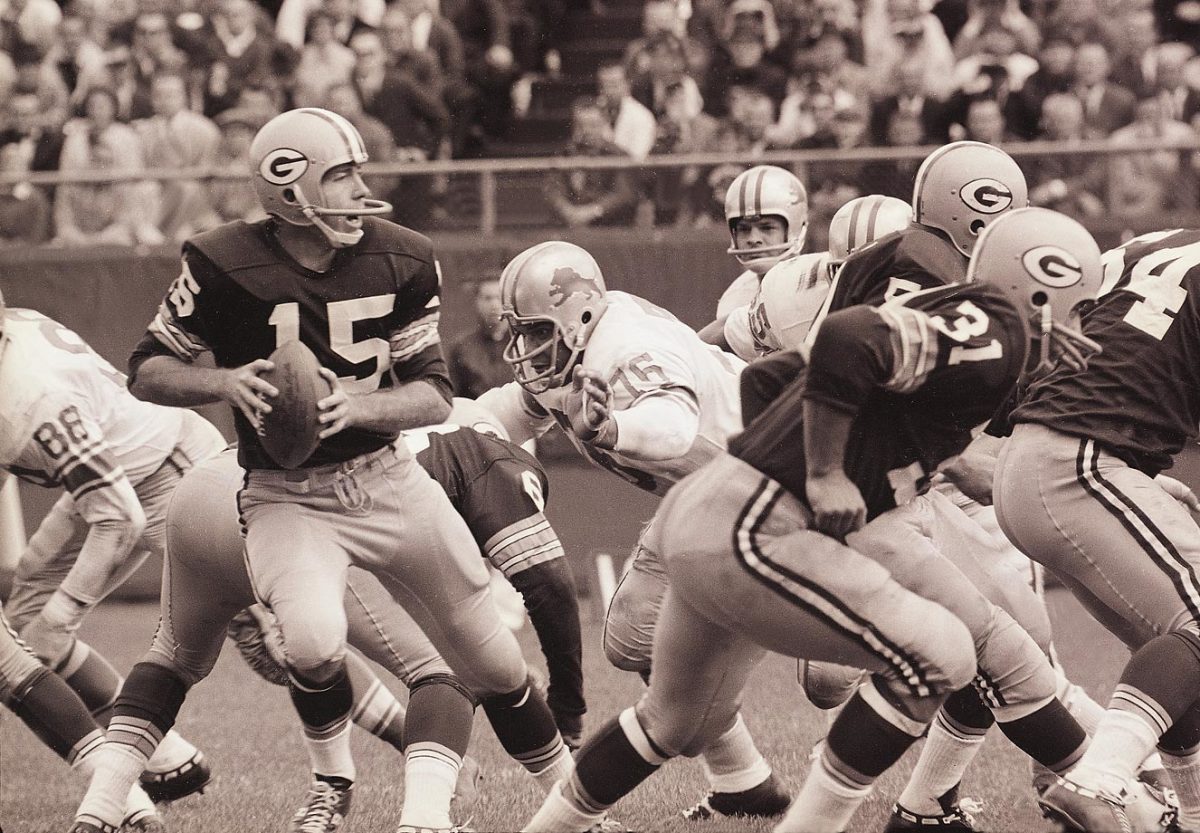
Over the course of Bart Starr's 10 years in the NFL, the league had 72 ties, including this one between the Packers and the Lions that ended 13-13. Due to a rule change, since 1974 there have only been 20 ties. And, until 1972, tie games weren't counted in the standings. (Text credit: Shannon Carroll)
1963
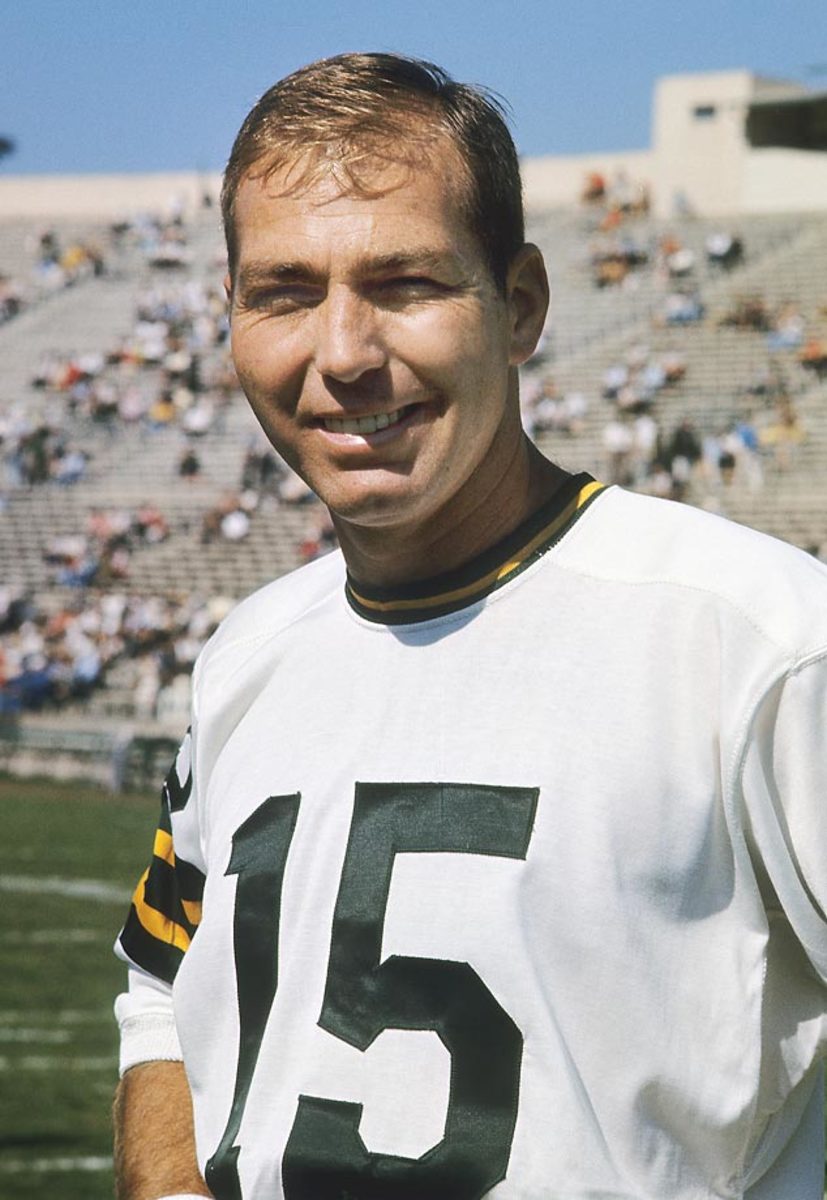
Bart Starr tried out for his high school football team his sophomore year but decided after two weeks that he no longer wanted to play. His father—with whom he had a tough relationship—gave his son the option to either play football or work in the family's garden. Guess Starr made a good decision. (Text credit: Shannon Carroll)
1963
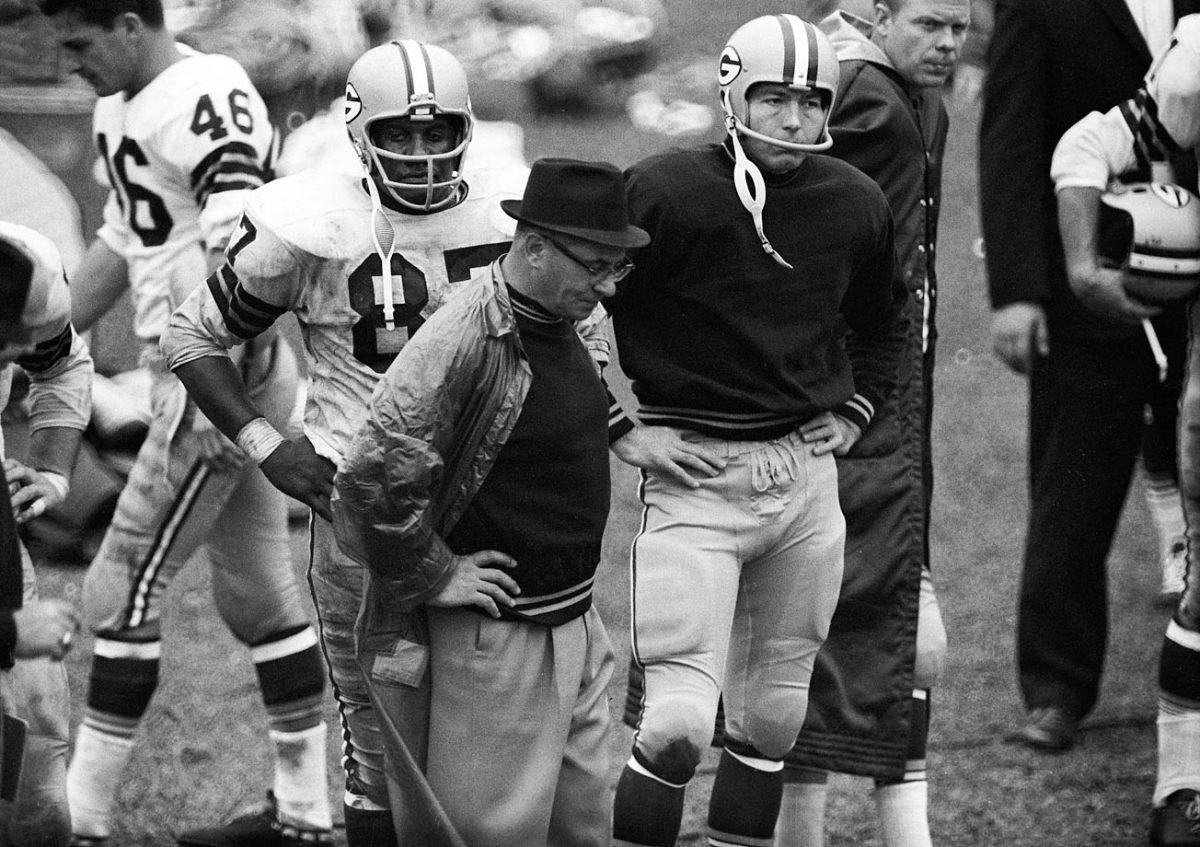
Unable to capture a third NFL championship, the Packers (11-2) finished second in the Western Conference in 1963. Both losses came at the hands of the Chicago Bears, who went on to win the title. (Text credit: Shannon Carroll)
1964
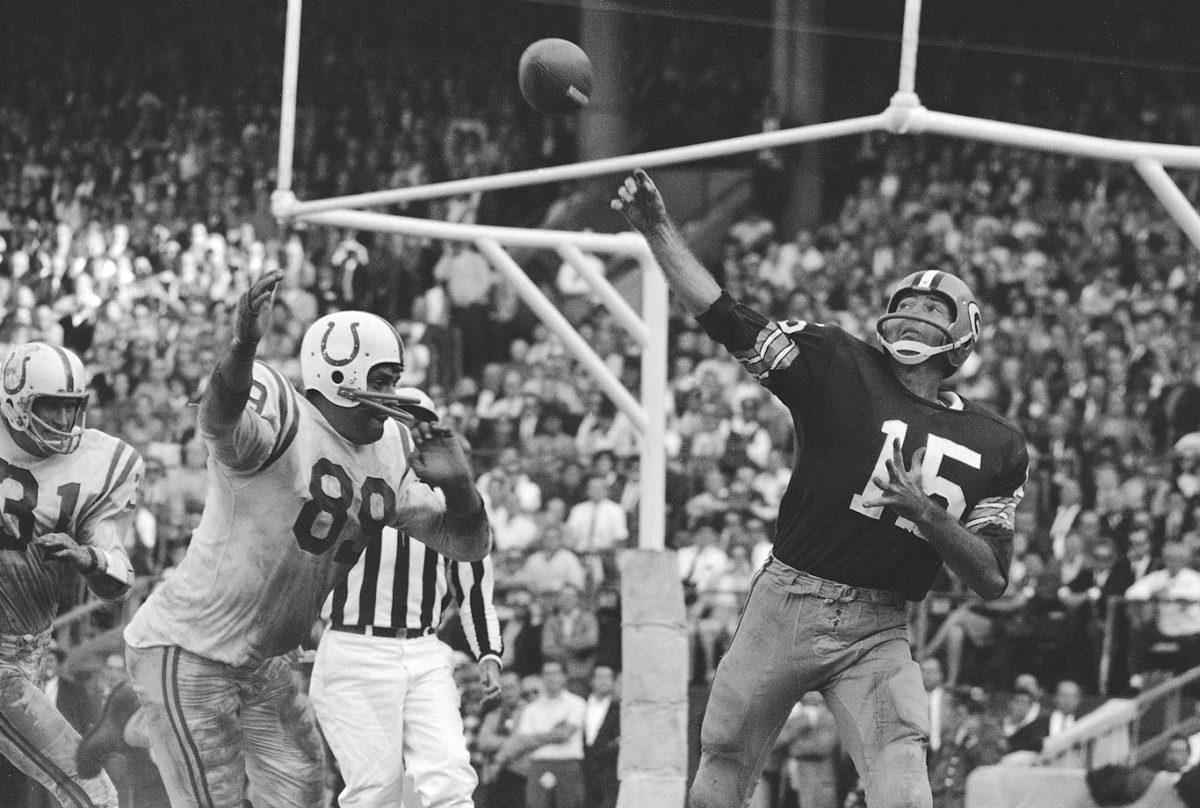
In 1964, the Packers again finished second in the Western Conference, this time behind the Baltimore Colts. Over the season, Starr completed 59.9% of his passes and had 15 touchdowns to just four interceptions. (Text credit: Shannon Carroll)
1964
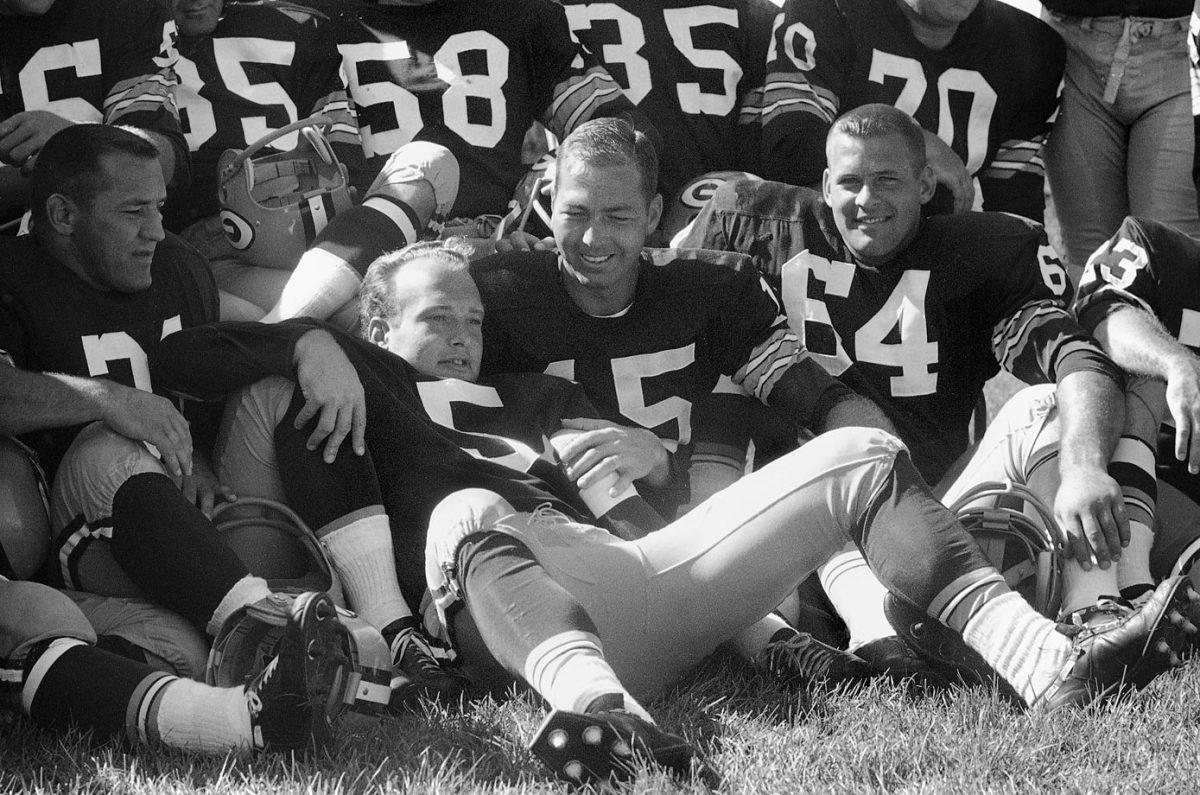
Regarding Paul Hornung, Bart Starr once said, "[Max McGee] and Hornung were perfect teammates on the road. Neither liked curfew. But what clutch performers. They were unbelievable." (Text credit: Shannon Carroll)
1964
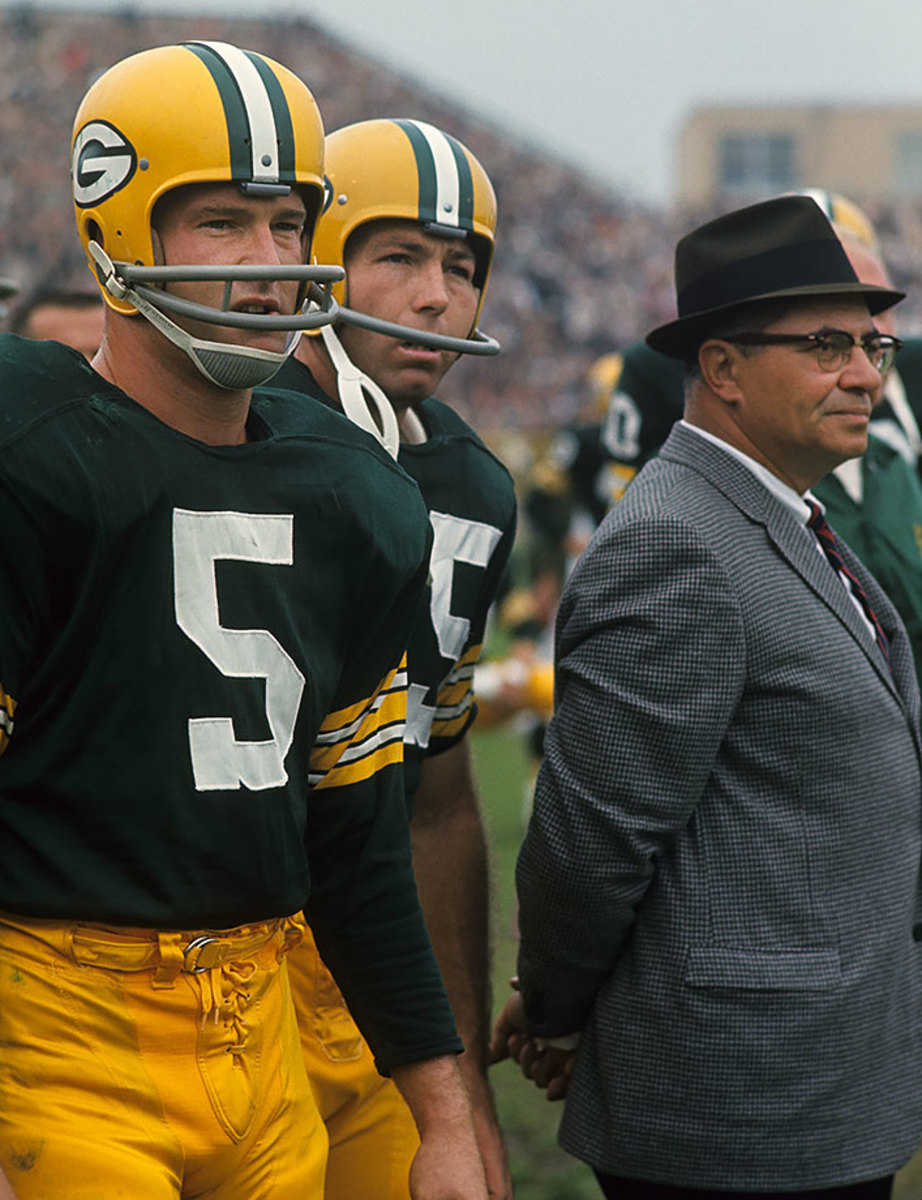
Three Packers legends — Paul Hornung, Bart Starr, and Vince Lombardi — stand together during a game against the Baltimore Colts.
1965
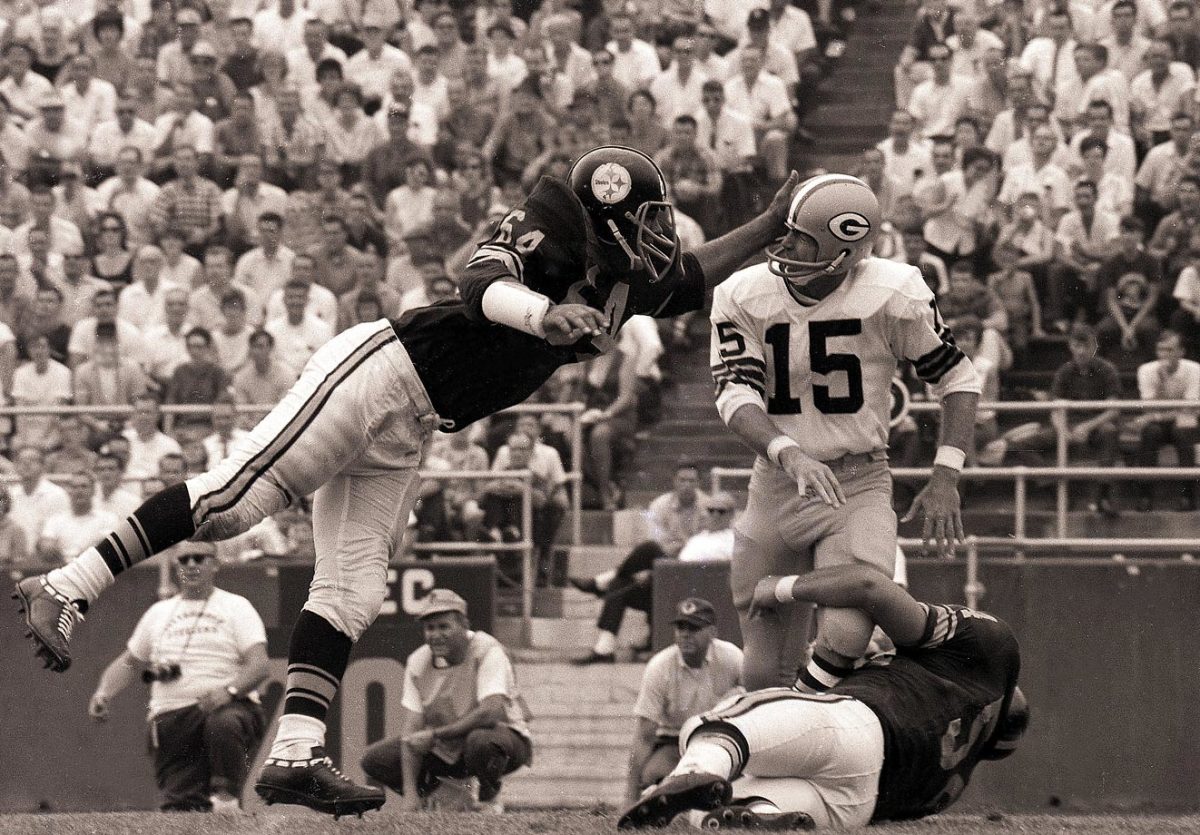
While some defenders underestimated Starr because of his relatively modest arm, most realized that he was an incredibly analytical quarterback with a great view of the field and a stellar memory. He said at one point, "If you work harder than somebody else, chances are you'll beat him though he has more talent than you." (Text credit: Shannon Carroll)
1965
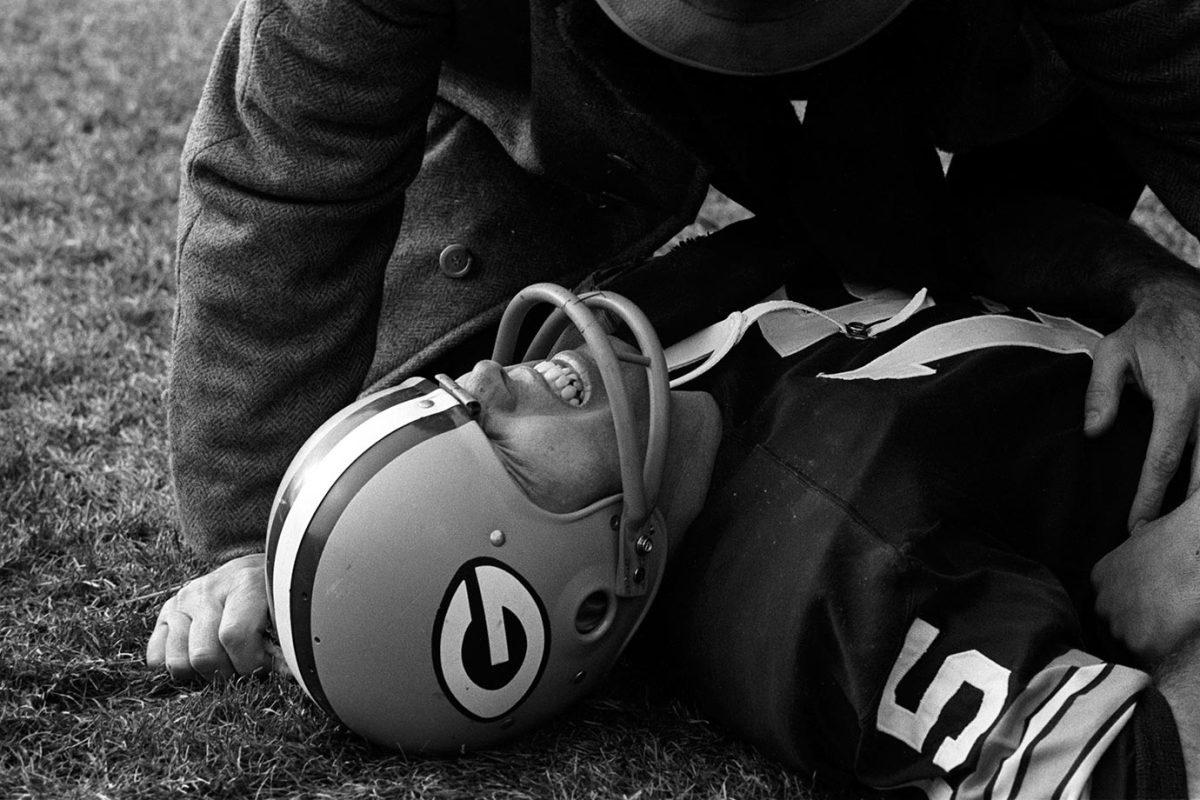
In the Western Conference Championship against the Baltimore Colts, Starr injured his ribs on the game's first play when he threw a 10-yard pass that was then fumbled and scooped by a Colts linebacker who Starr tried—and failed—to tackle. He didn't return to the game, but the Packers still beat the Colts 13-10, doing so on a couple of last-minute field goals. (Text credit: Shannon Carroll)
1966
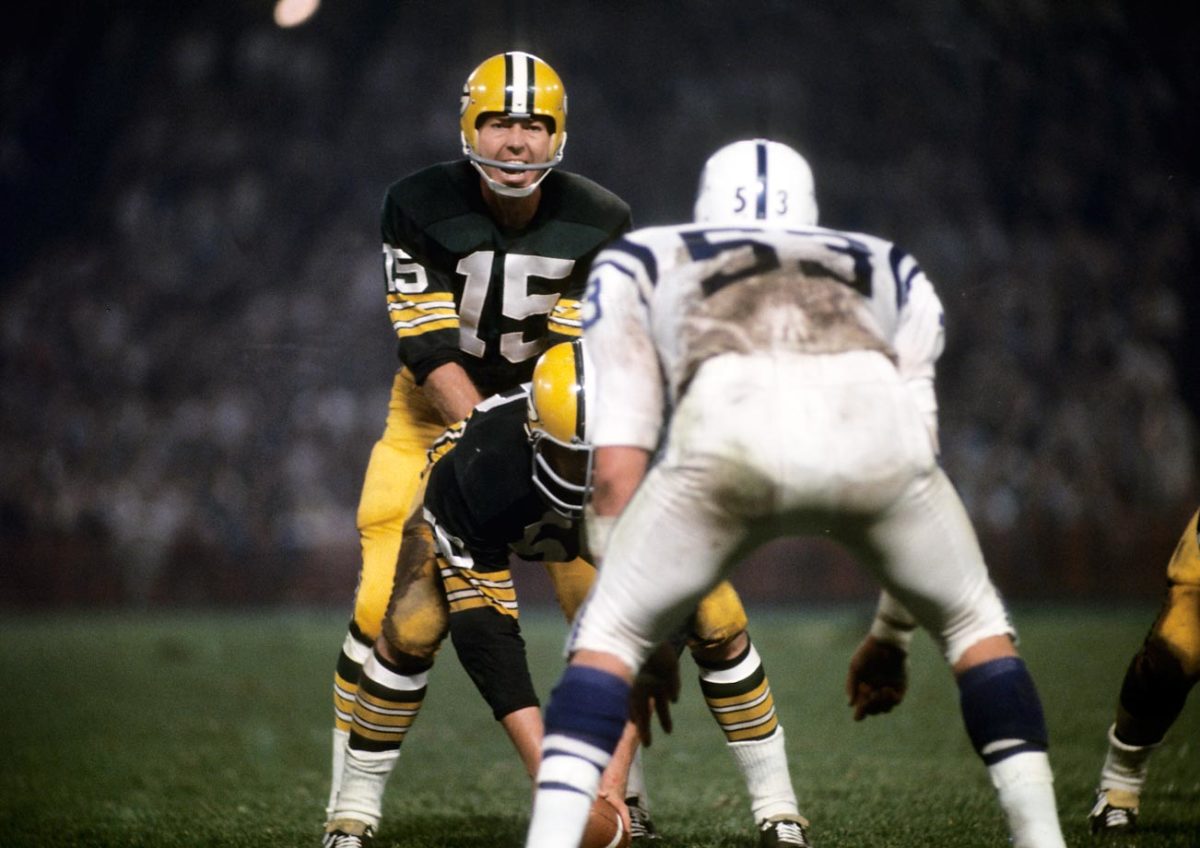
When Bart Starr won his first Super Bowl, his salary was equivalent to a little more than $700,000, much less than the millions today's top quarterbacks make. (Text credit: Shannon Carroll)
1966
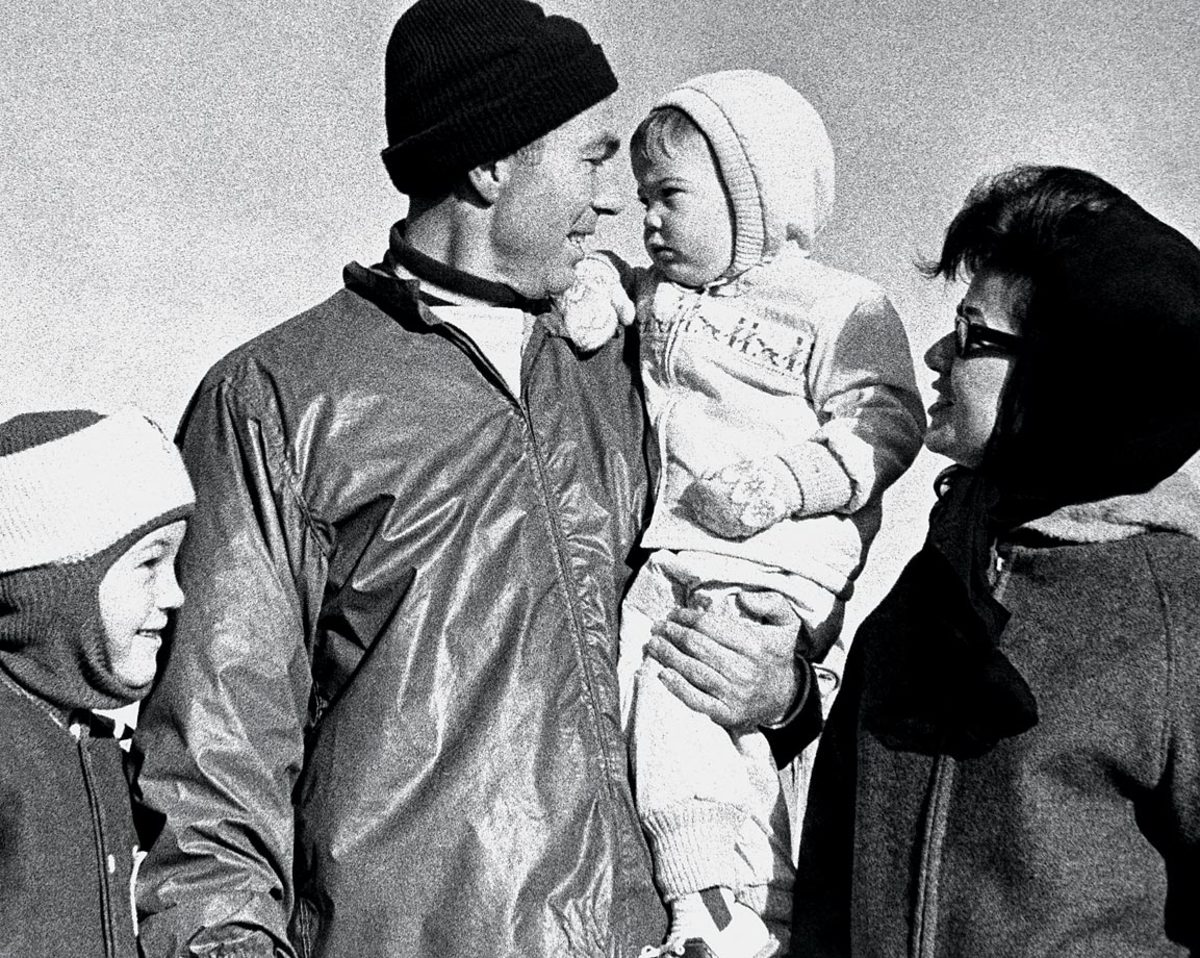
Starr and his high school sweetheart, Cherry Morton, eloped in 1954 and kept their marriage under wraps due to fear Alabama might revoke Starr's scholarship because of the belief that athletes should just focus on sports. They had two kids, Bret, left, and Bart Jr, held by his father. (Text credit: Shannon Carroll)
1967
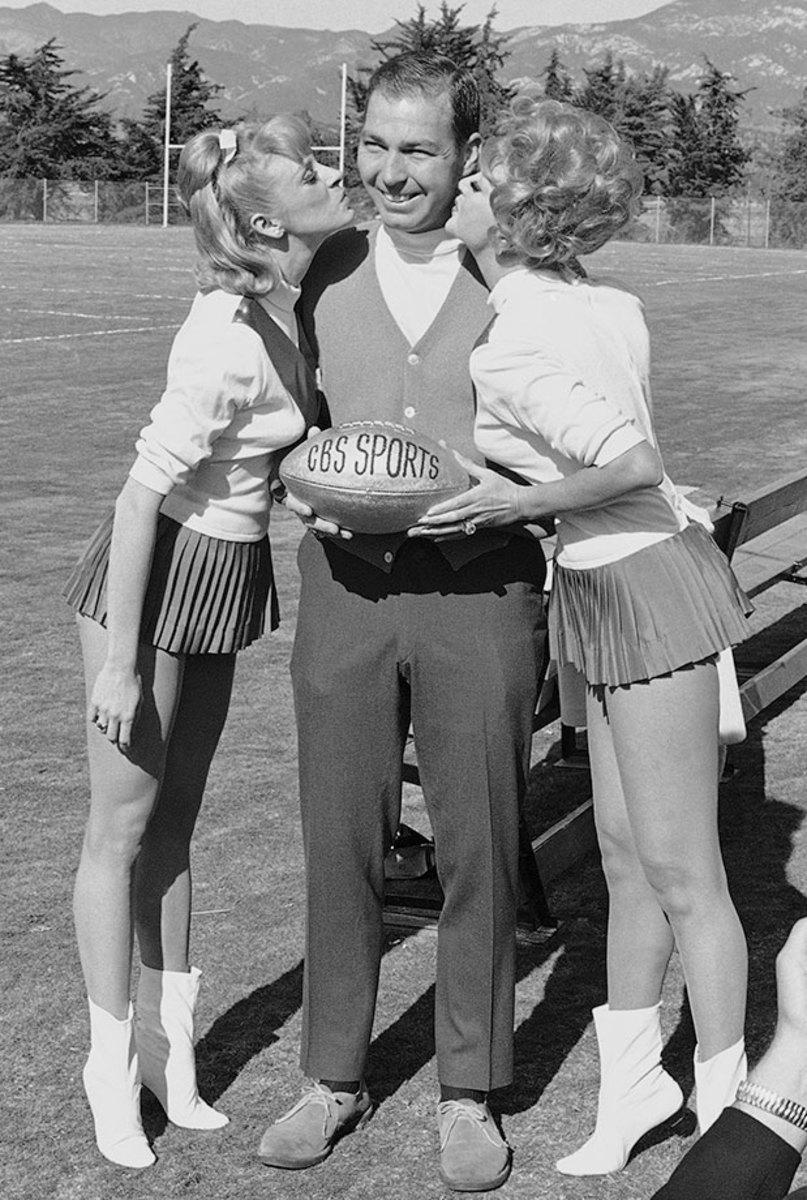
Bart Starr is the center of attention as he gets kisses from a pair of pretty girls for his 33rd birthday in Santa Barbara, Calif., just days before the Green Bay Packers played the Kansas City Chiefs in the first Super Bowl.
1967
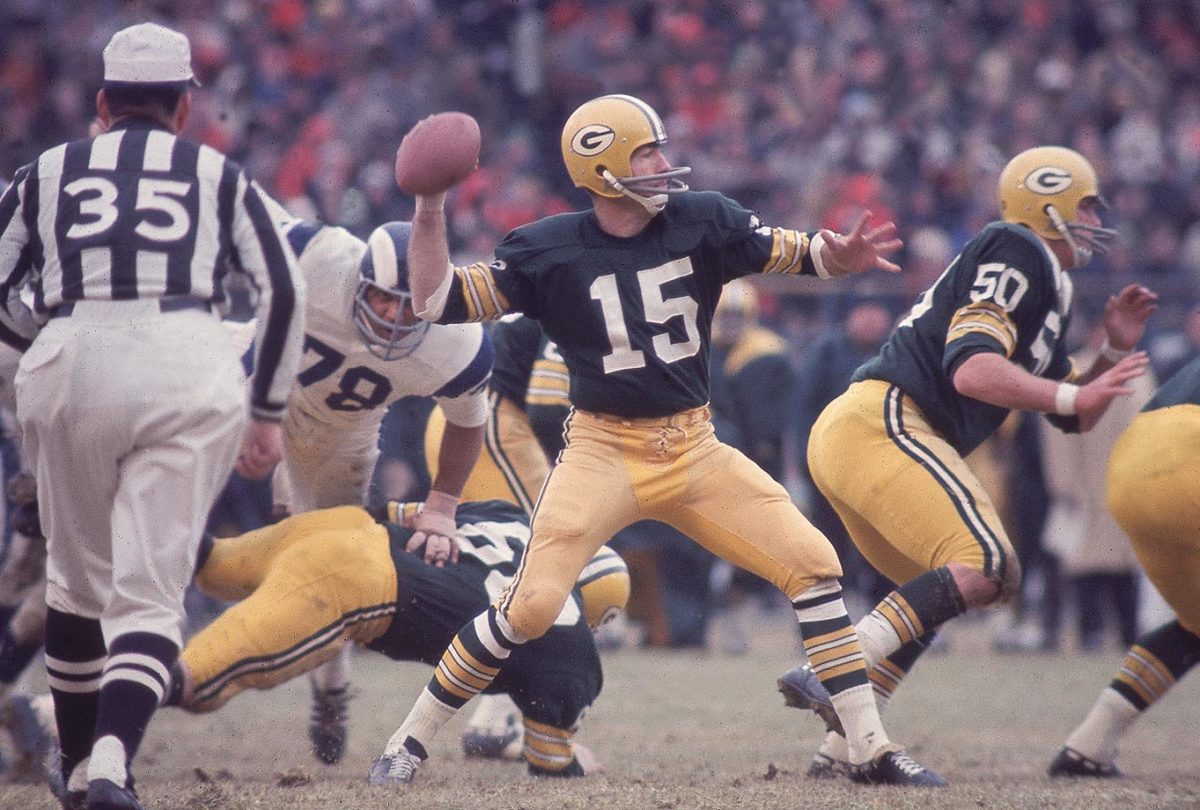
The 1966 Packers were ranked as the sixth greatest Super Bowl-winning team on the NFL Network's "America's Game: The Super Bowl Champions." (Text credit: Shannon Carroll)
1967
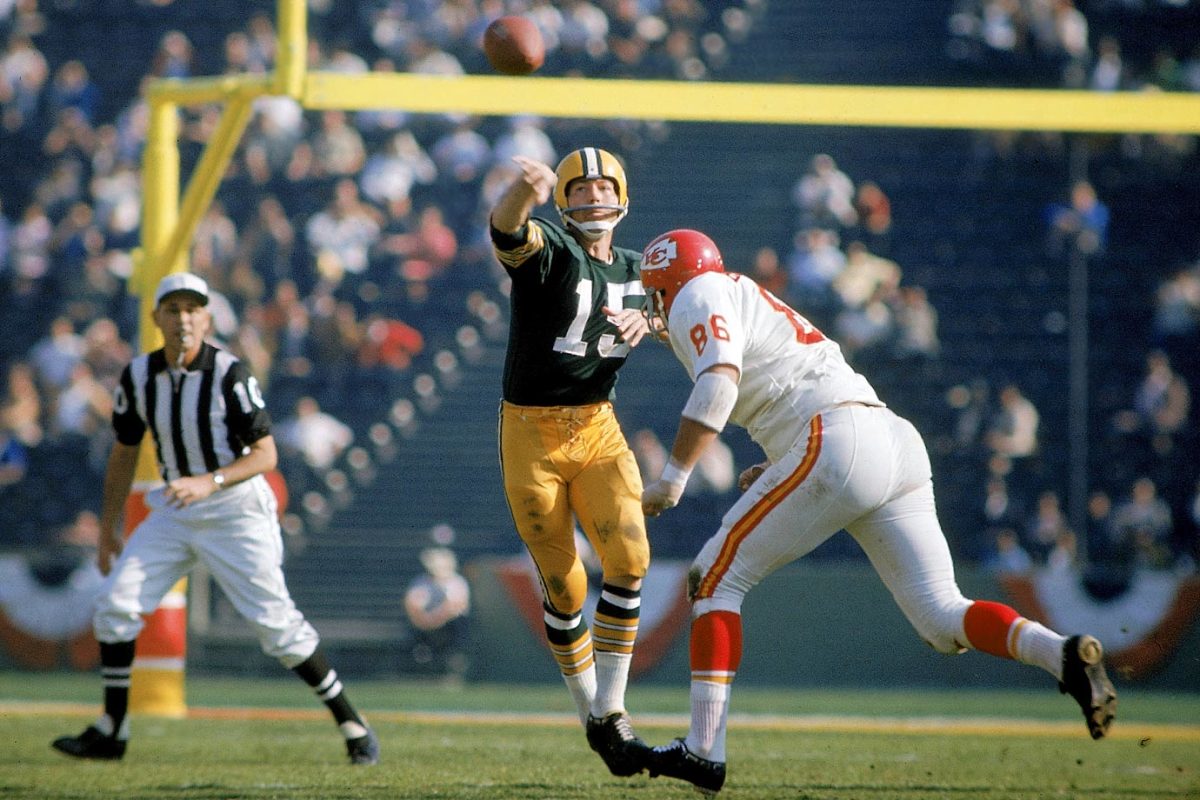
In the NFL's first Super Bowl, the Starr-led Packers trounced the Kansas City Chiefs 35-10. (All of Kansas City's scoring happened in the second quarter.) Starr went 16-for-23 for 250 yards and two touchdowns. (Text credit: Shannon Carroll)
1967
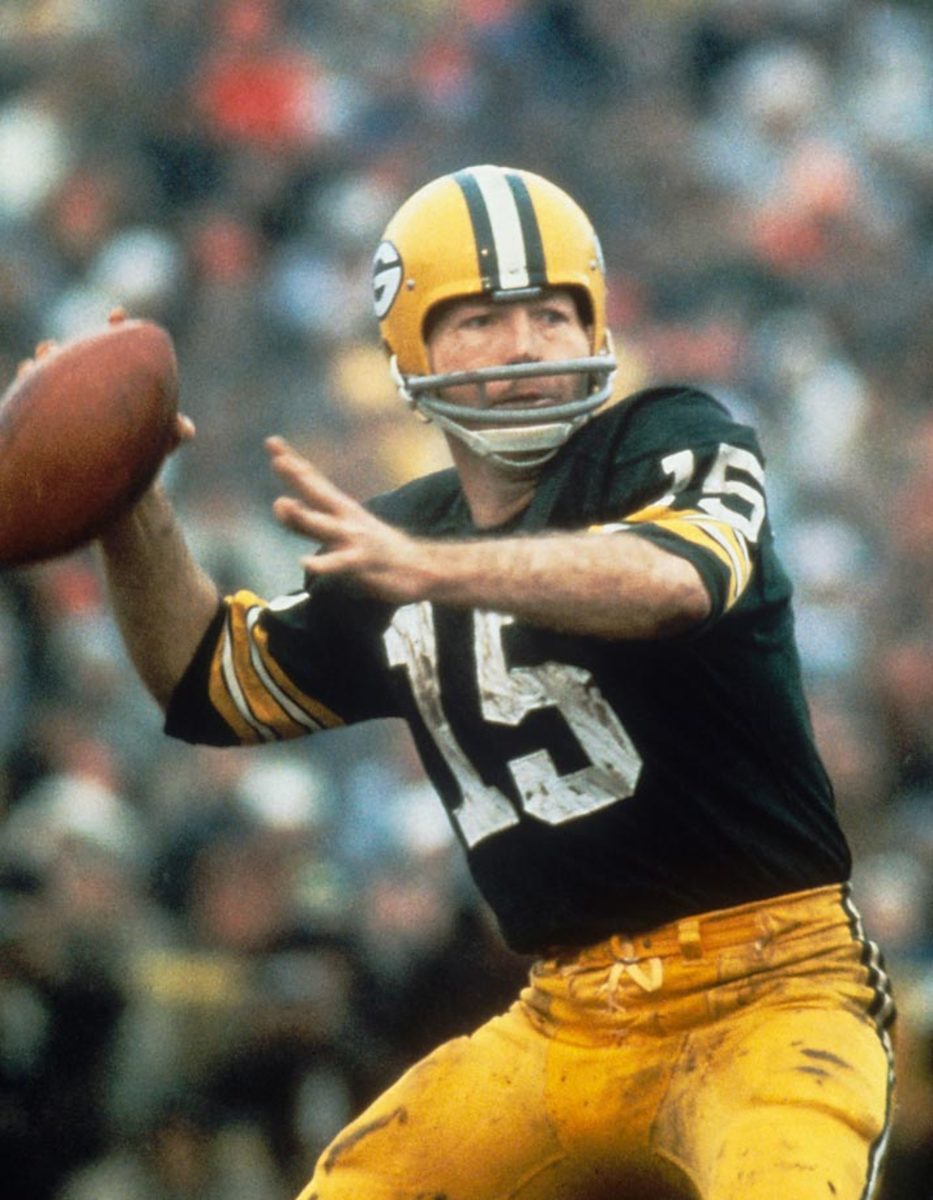
After being named Super Bowl I MVP, Bart Starr was given the keys to a Dodge Charger. But he petitioned the state of Wisconsin to raffle the car and donate the proceeds to the Rawhide Boys Ranch, which offers programs for at-risk youth. (Text credit: Shannon Carroll)
1967
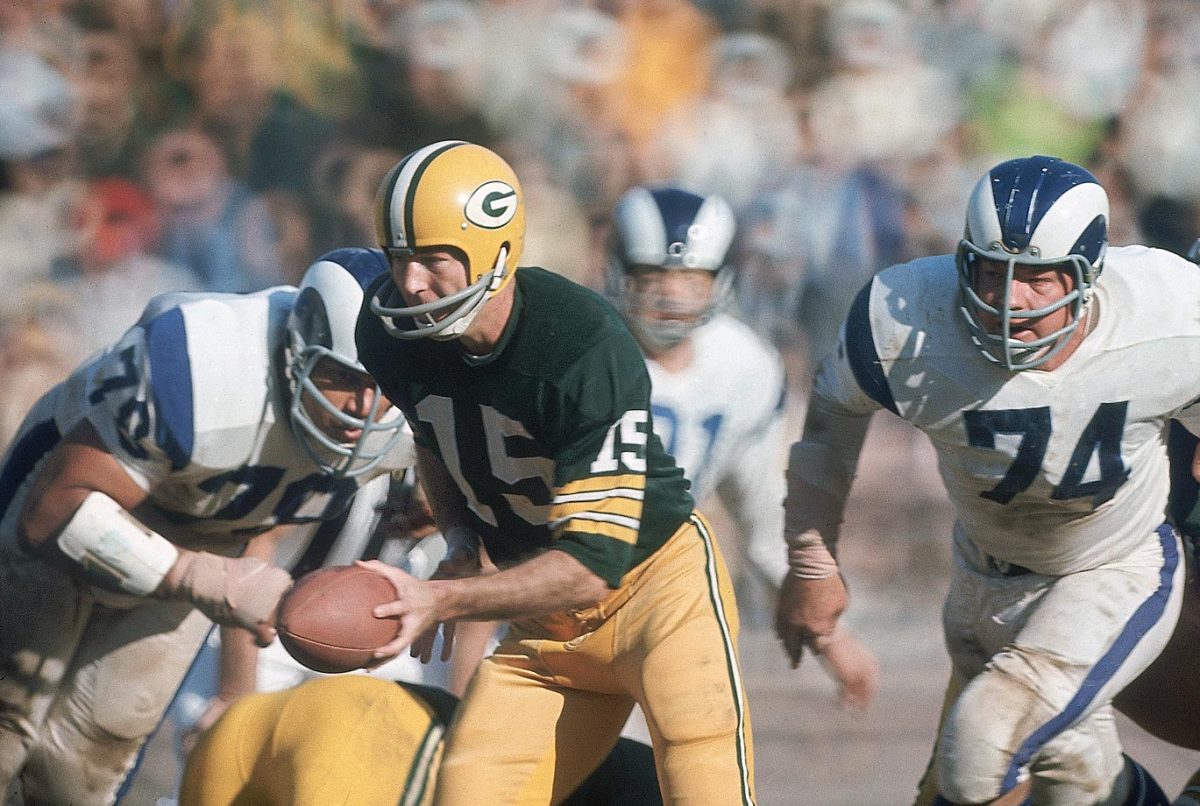
It was considered fitting that the Chiefs and the Packers met in Super Bowl I—then known as the "First AFL-NFL World Championship Game"—since Kansas City's owner, Lamar Hunt, founded the AFL, and the Packers were considered to be the best NFL team. (Text credit: Shannon Carroll)
1967
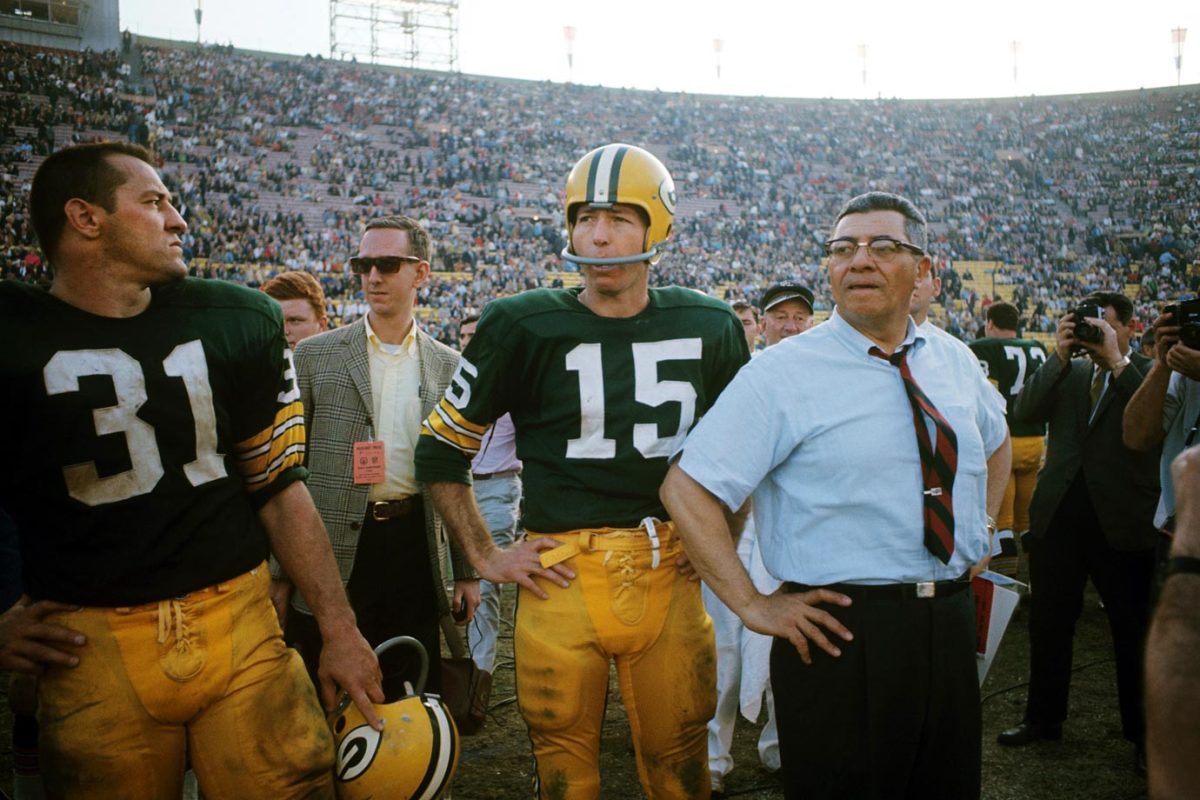
At the start of the Packers' first team meeting in 1959, Lombardi told the team, "Gentlemen, we're going to relentlessly chase perfection." That has stuck with Starr ever since. (Text credit: Shannon Carroll)
1967
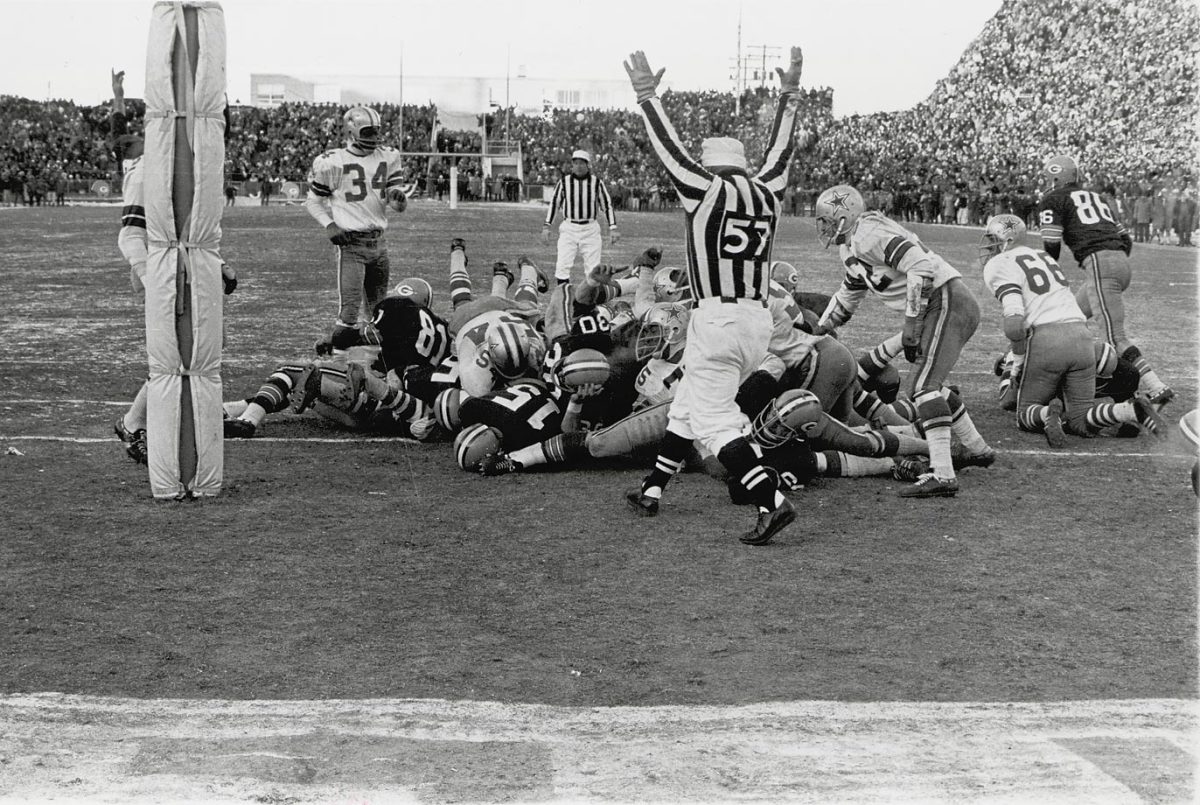
As quarterback, Starr called all the team's plays, most famously a QB sneak in the Ice Bowl against the Cowboys. Starr called "35 Wedge," but instead of handing the ball off to the halfback, Starr kept it himself. When Starr first suggested the play to Lombardi, the coach remarked, "Well, run it, and let's get the hell out of here." The Packers won, 21-17. (Text credit: Shannon Carroll)
1968
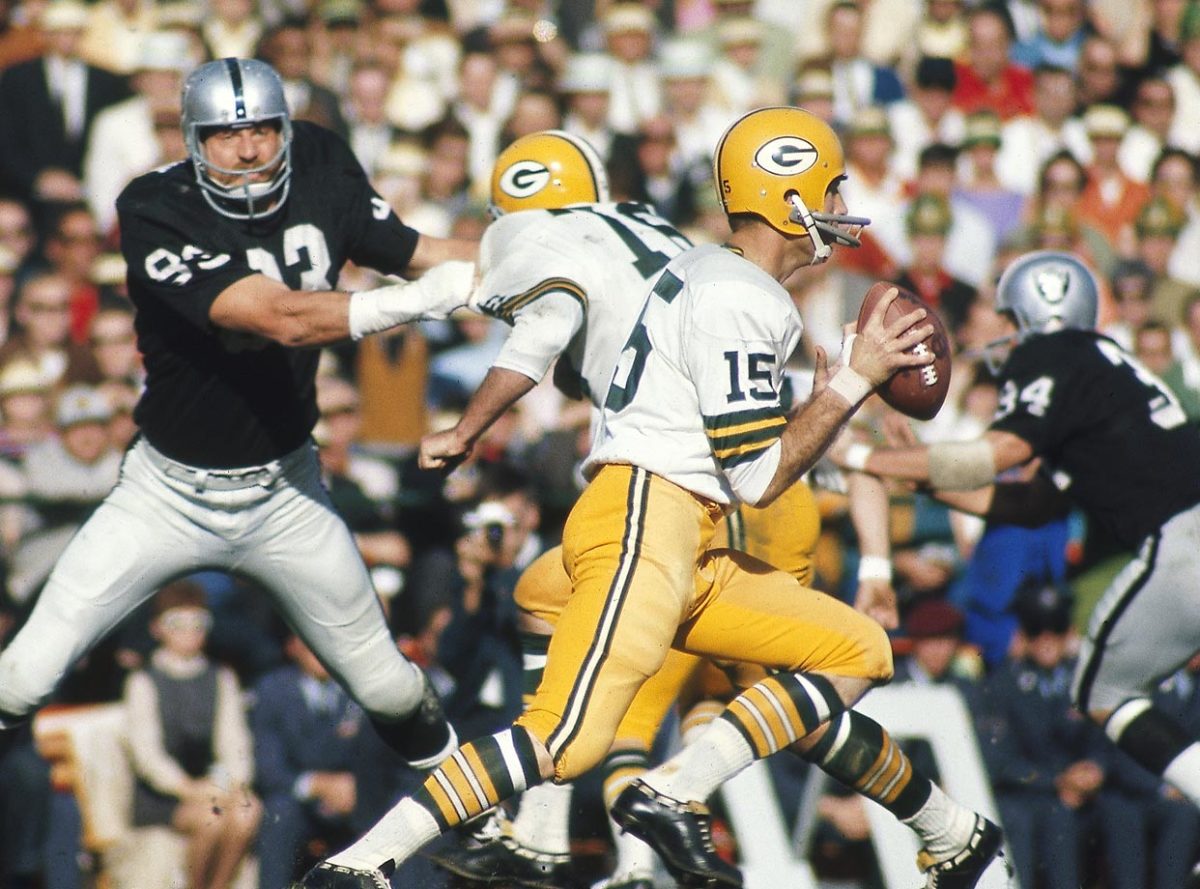
Under new head coach Phil Bengston, the Packers had their first losing season (6–7–1) since 1958. Green Bay finished a disappointing third in the Central Division of the Western Conference. (Text credit: Shannon Carroll)
1968
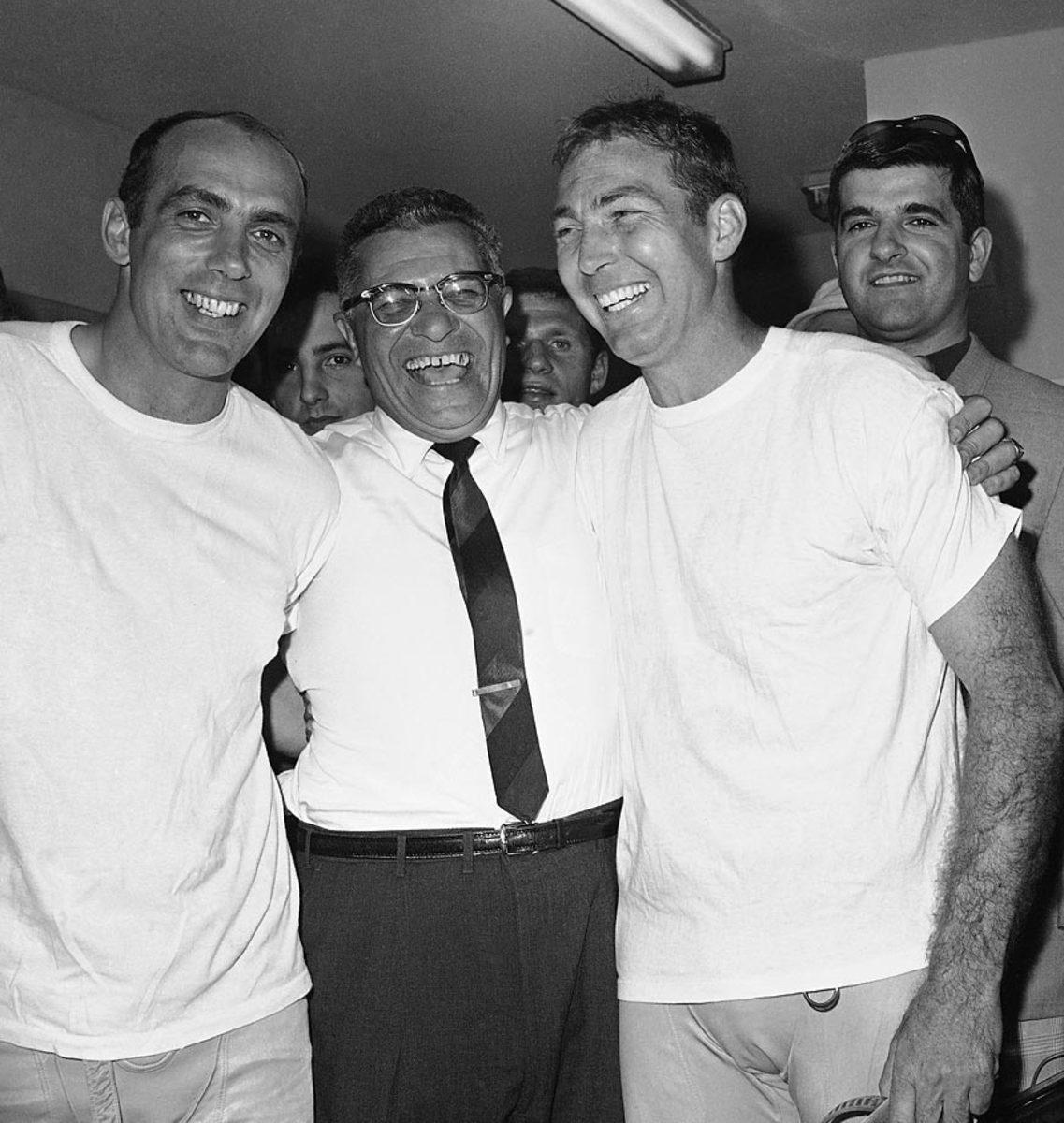
Starr wears his Super Bowl II championship ring in memory of his favorite coach, because Lombardi said it was the ring he would have worn. Lombardi told the team that three-diamond ring represented the third of three consecutive title runs. (Text credit: Shannon Carroll)
1970
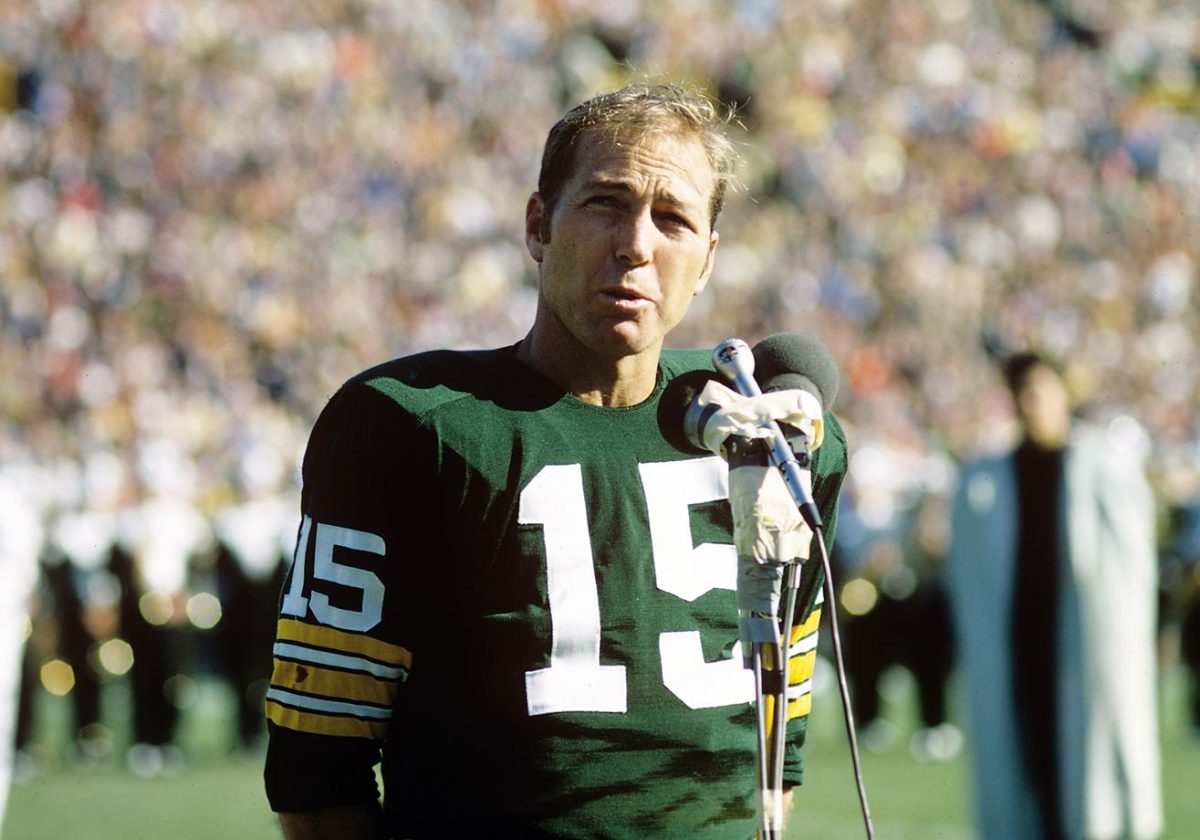
At a reception honoring Starr in the Brown County Veterans Memorial Arena in Green Bay, President Richard Nixon said: "I think the best way that I can present Bart Starr to his friends is to say very simply that the sixties will be described as the decade in which football became the number one sport in America, in which the Packers were the number one team, and Bart Starr was proudly the number one Packer." (Text credit: Shannon Carroll)
1983
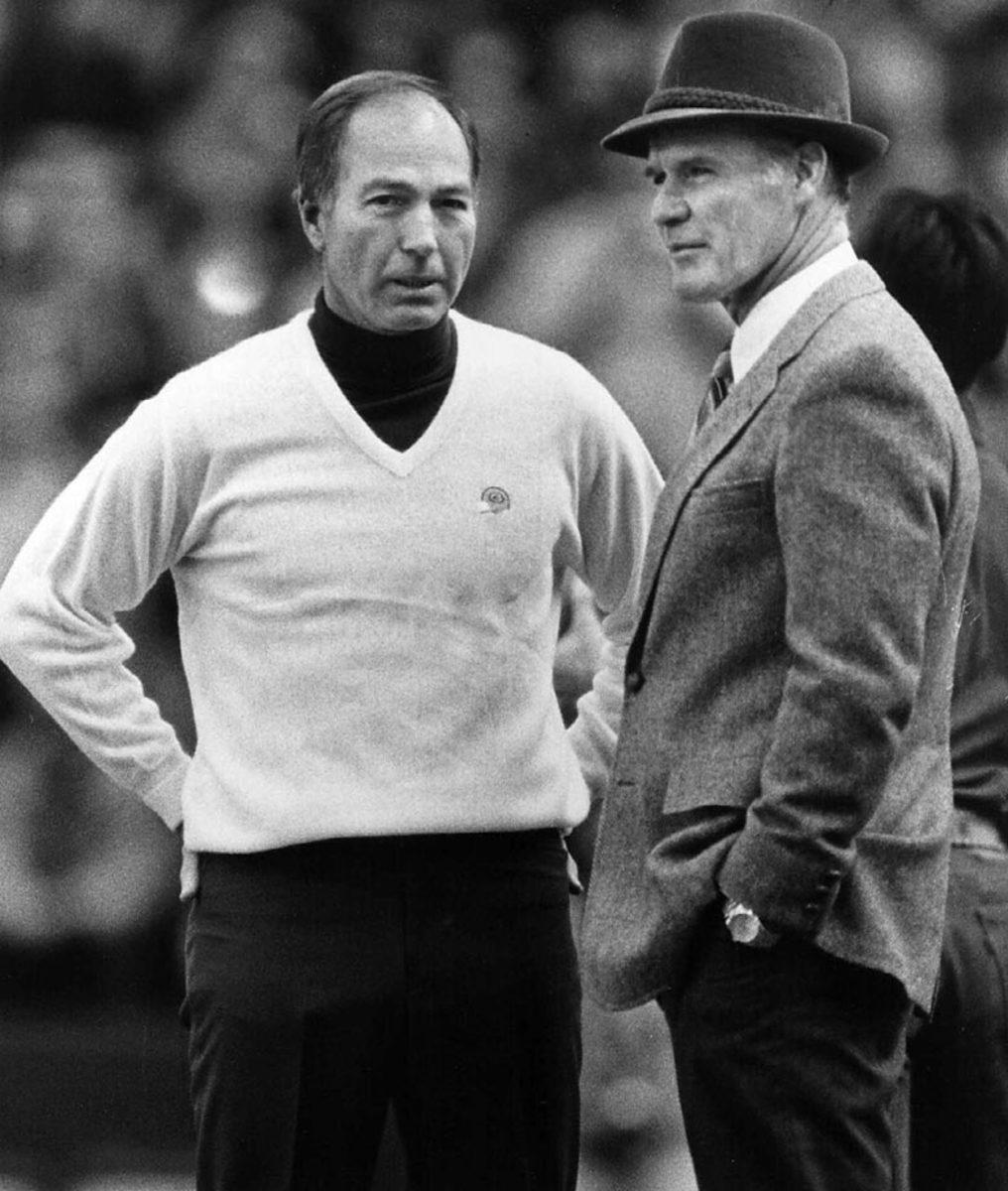
Years after Starr and Tom Landry met in the Ice Bowl as quarterbacks, the two met later as coaches. Of Starr's call for a quarterback sneak, Landry has since said, "It was a dumb call. But now it's a great play." (Text credit: Shannon Carroll)
1973
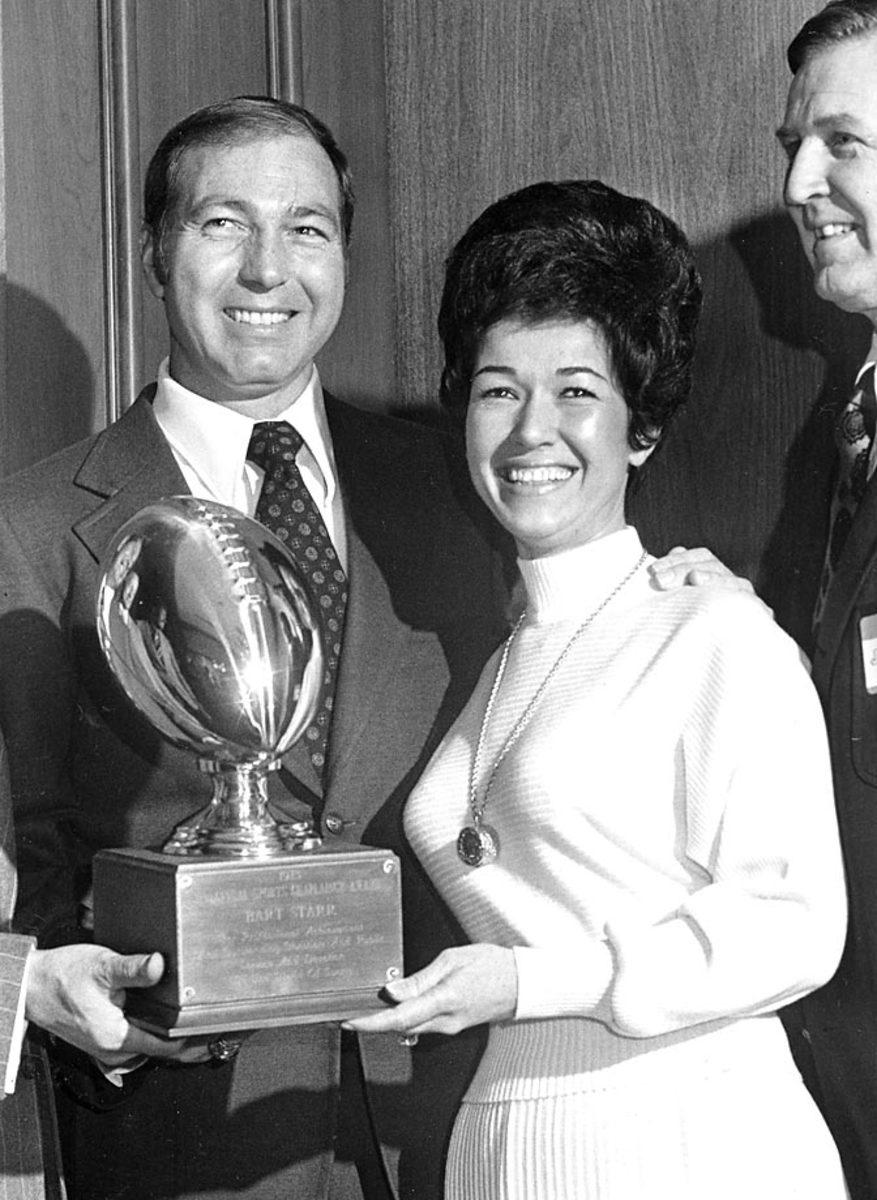
Starr retired after the 1971 season, and in 1973 the Packers retired his number, 15. Starr was just the third Green Bay player to be honored in that form—the others were Don Hutson (14) and Tony Canadeo (3). (Text credit: Shannon Carroll)
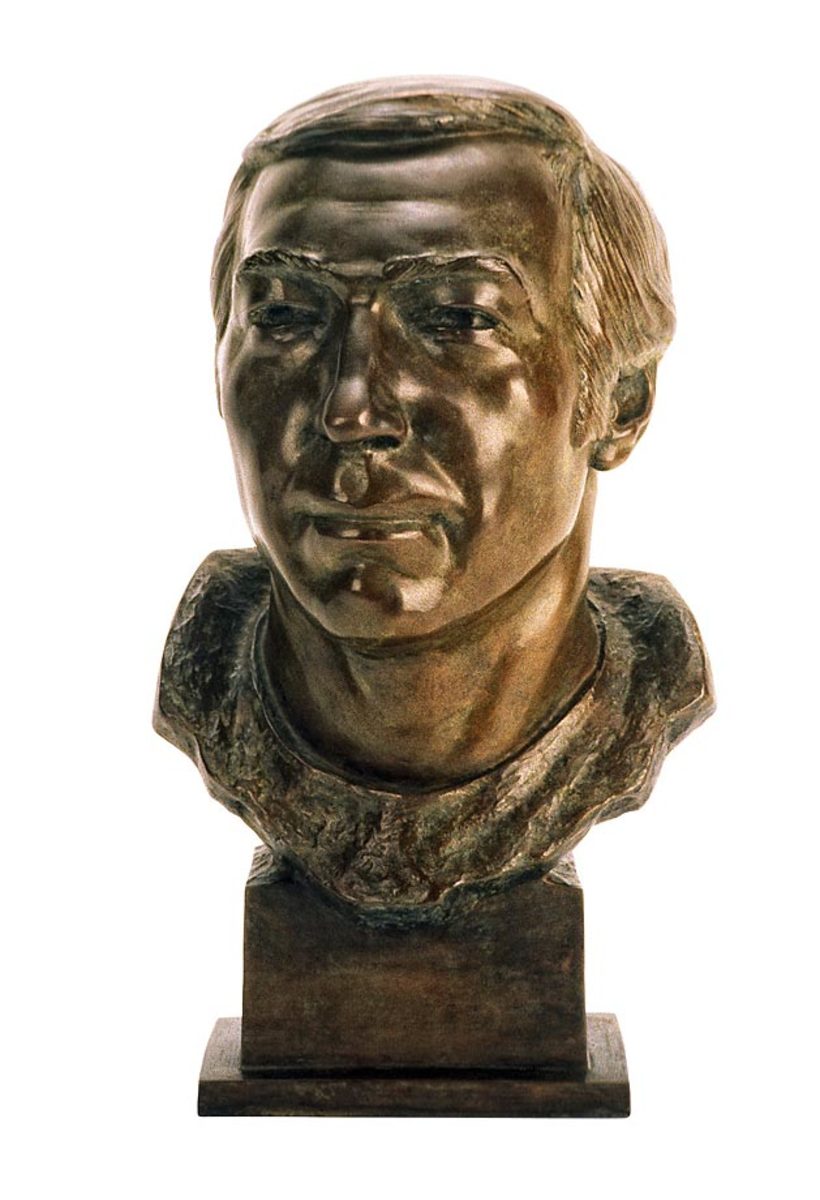
When he retired in 1972, Starr had an NFL-best career completion percentage (57.4). He also held the Packers' franchise record for games played (196) over the course of 32 years. His 9-1 playoff record remains the highest win percentage—not counting quarterbacks who just started one game—and his playoff passer rating (104.80) remains on top. (Text credit: Shannon Carroll)
1975
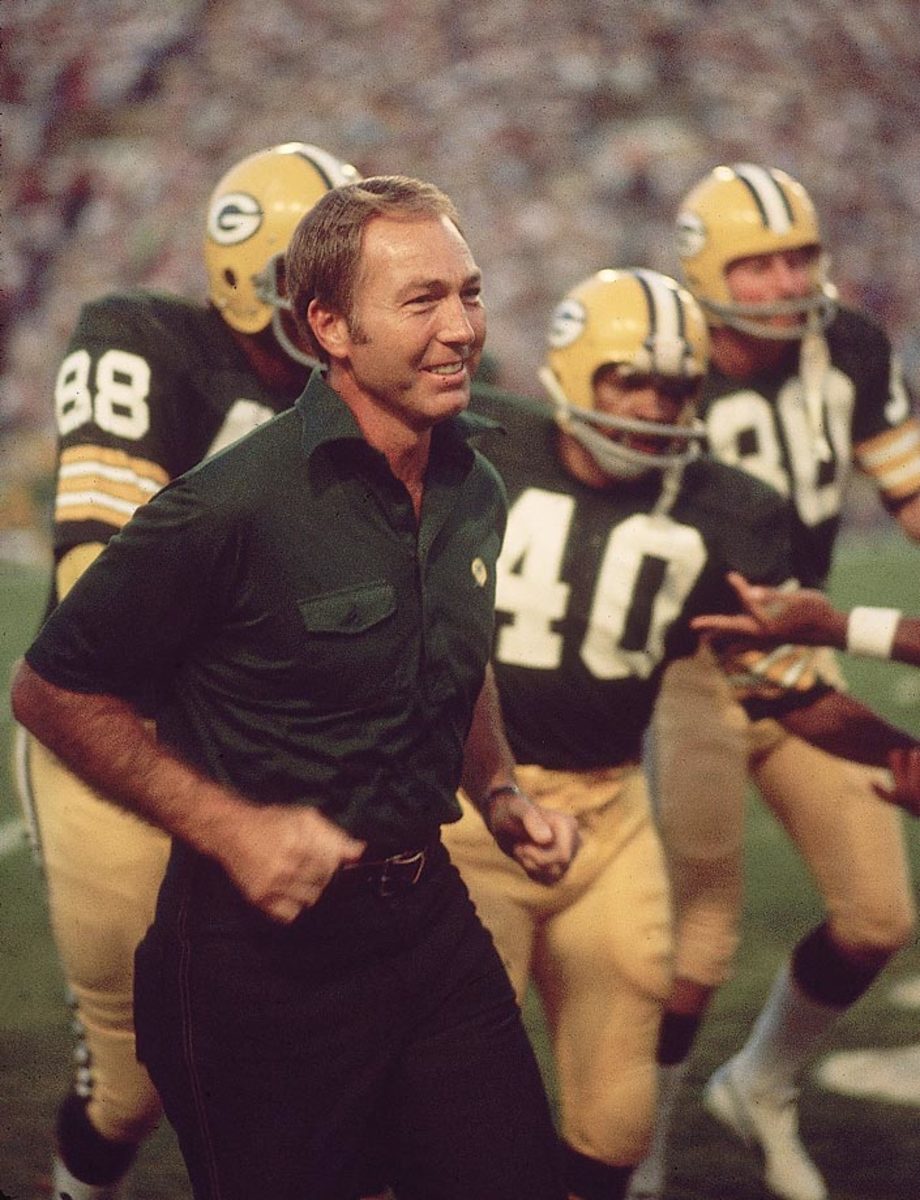
Starr took over coaching duties in 1975, where he went 4-10 in his first season as a head coach. (Text credit: Shannon Carroll)
1983
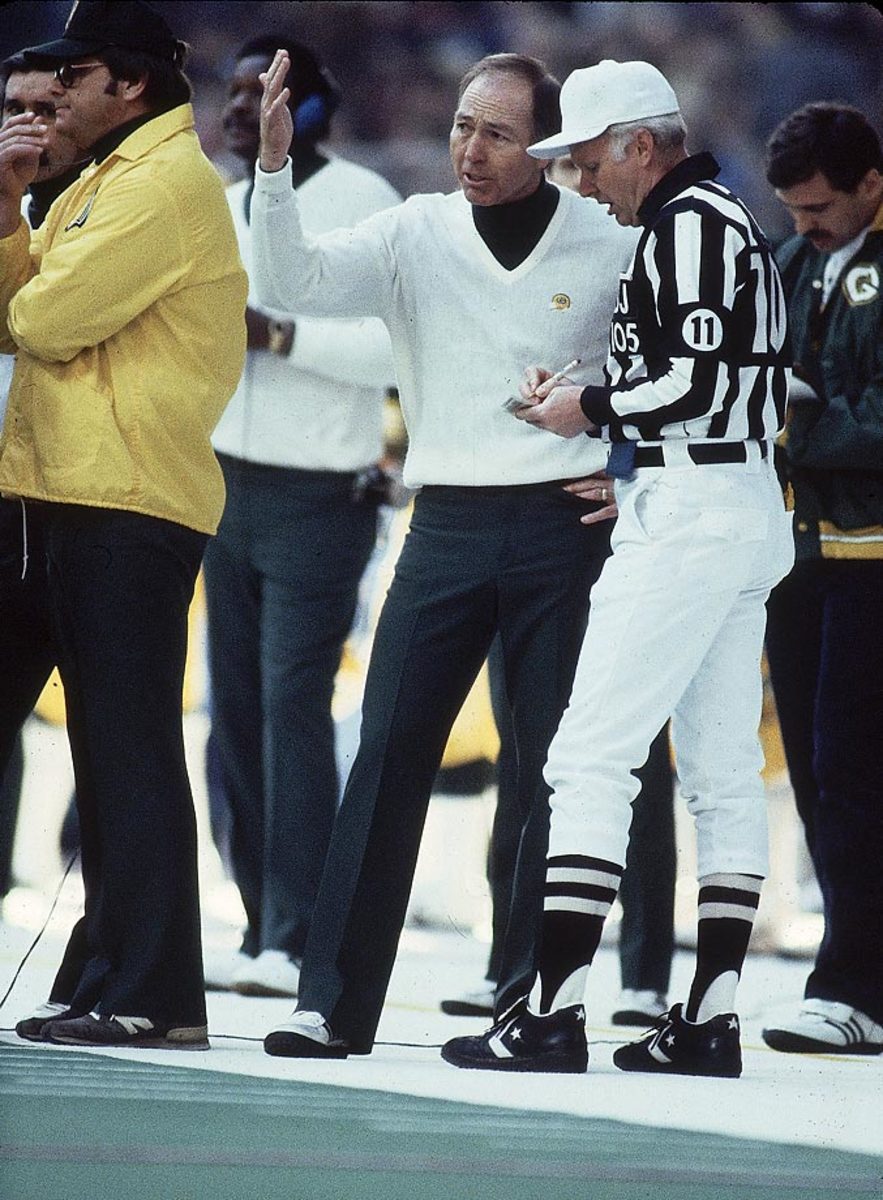
In Starr's final year as the Packers' head coach, the Packers went 8-8. In his nine seasons as the coach, Green Bay's record was never higher than during the 1982 season, which was shortened by a player's strike, where the Packers went 5-3-1. (Text credit: Shannon Carroll)
1983
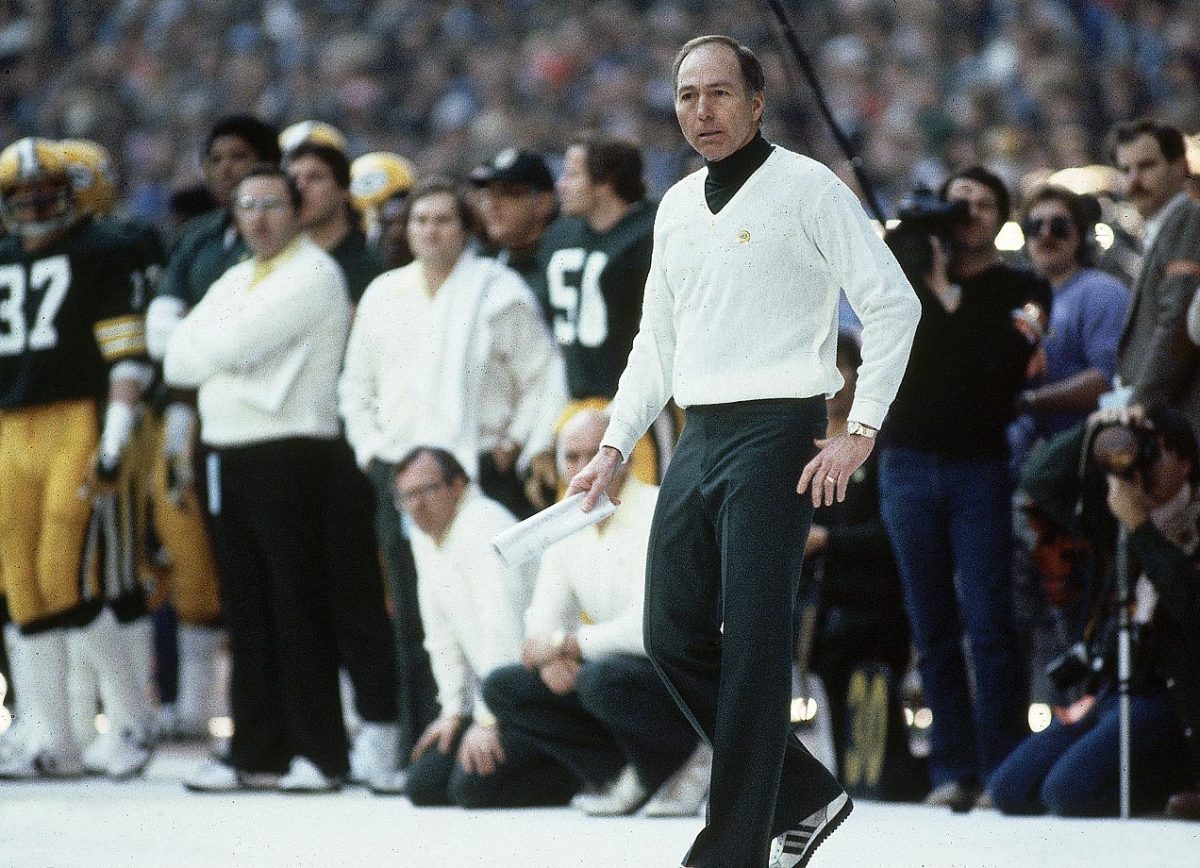
With Starr as head coach during his nine years with the Packers, the team had a .408 winning average and one only one division title. (Text credit: Shannon Carroll)
2003
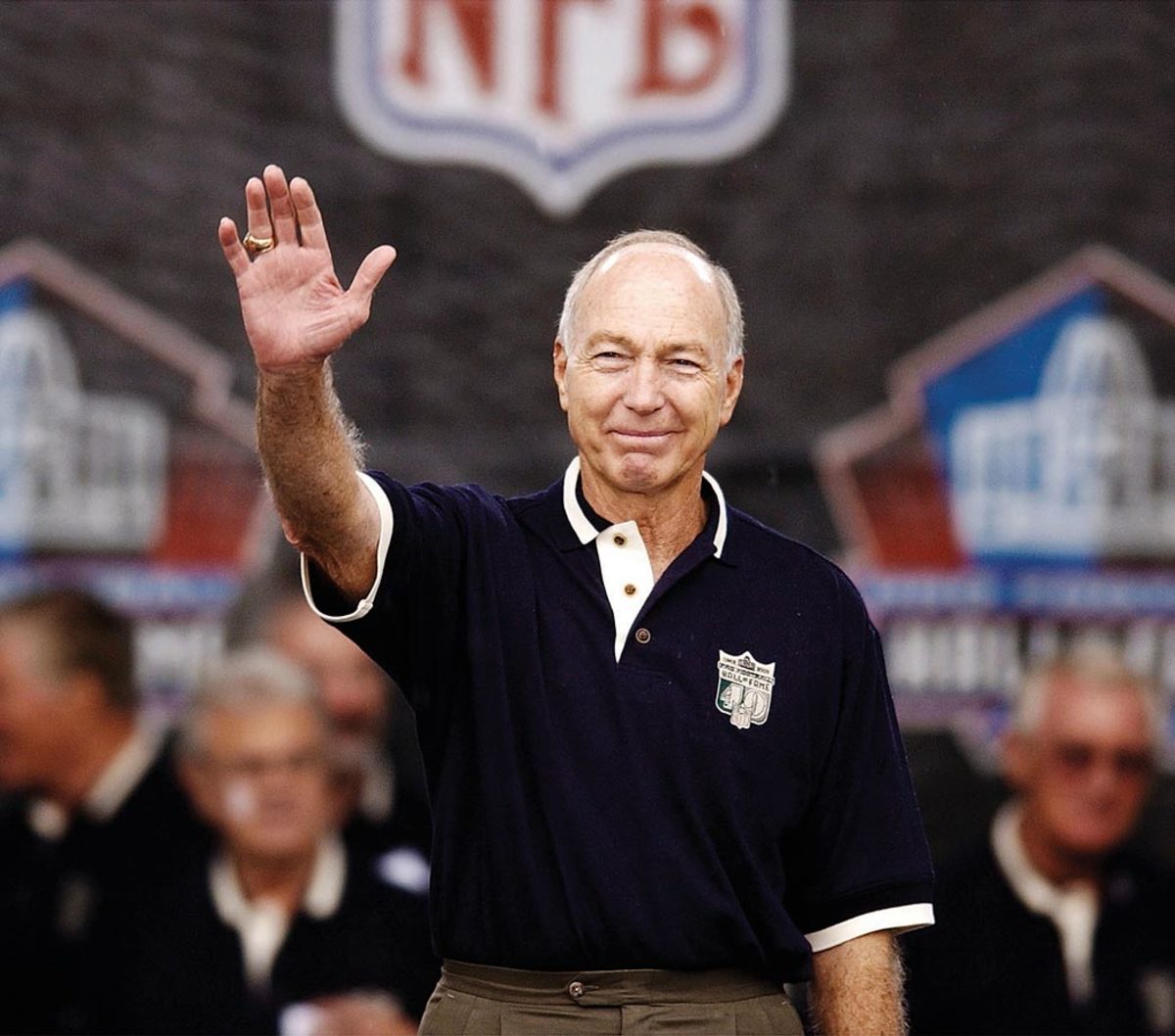
At the start of his sophomore year at Alabama, Starr was named the starter at quarterback, safety and punter. Before deciding to be part of the Crimson Tide, Starr had considered attending Auburn or Kentucky. (Text credit: Shannon Carroll)
2005
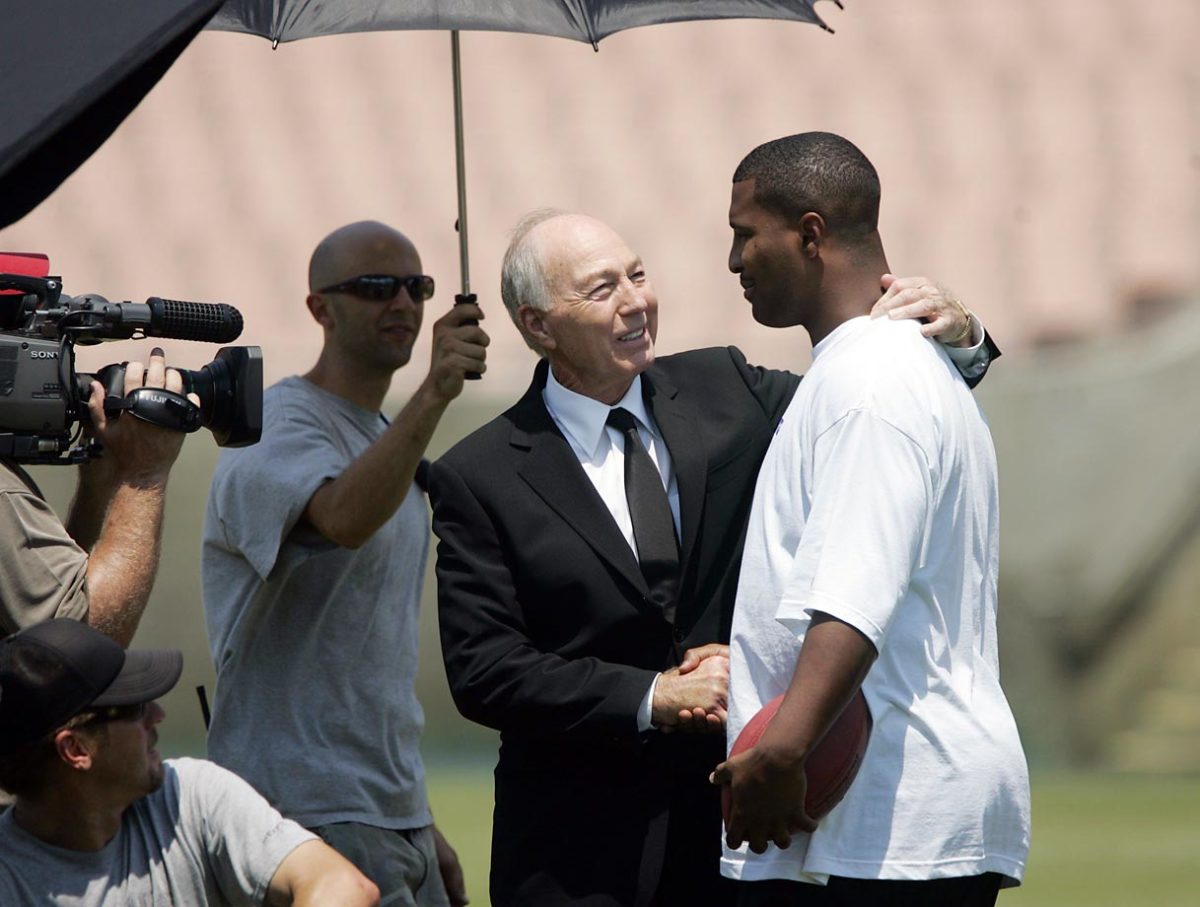
Starr moved to Arizona in the late 1980s while he was in the healthcare real estate business but moved back to Birmingham, Ala., after the death of one of his sons to spend more time with his other son. He co-founded the Rawhide Boys Ranch many decades ago and spent a lot of time developing that. He has participated in many other charitable ventures. (Text credit: Shannon Carroll)
2007
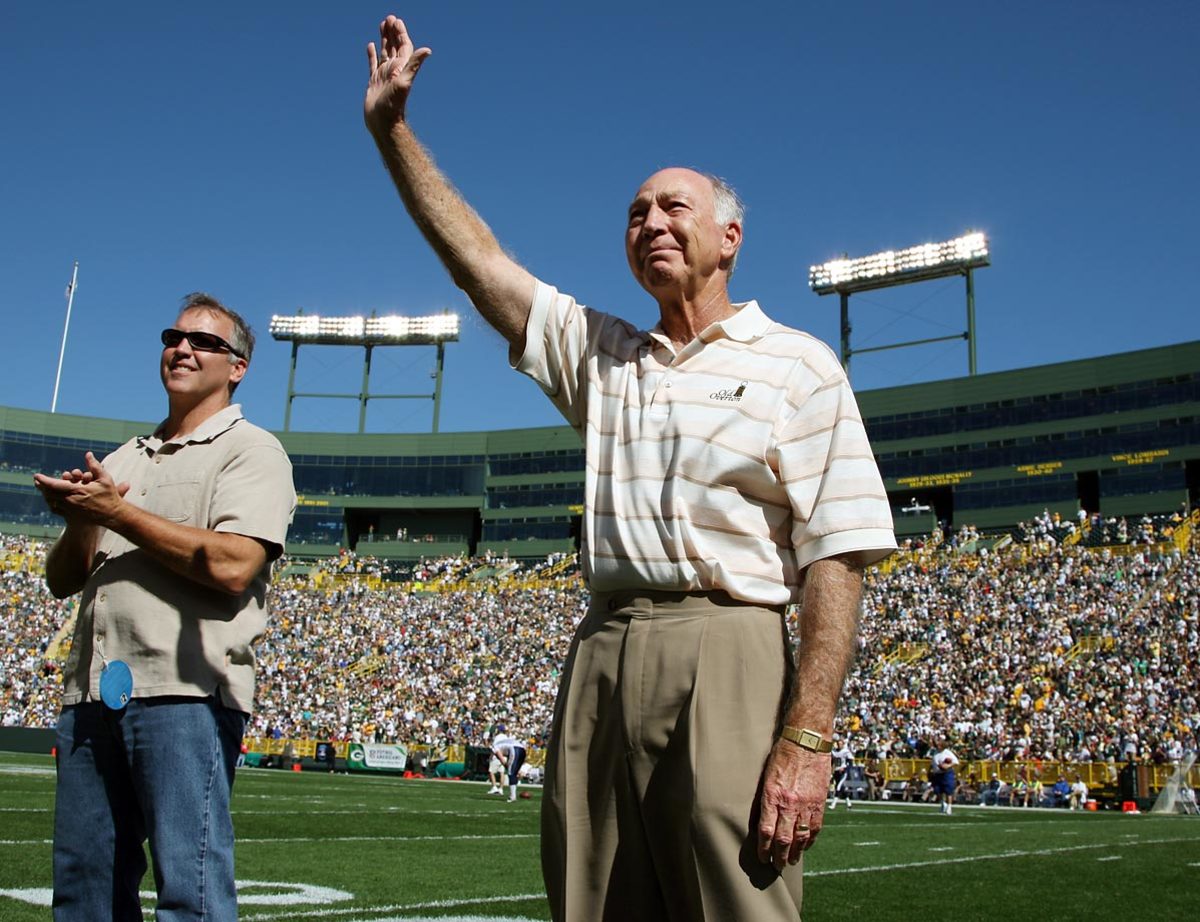
The Bart Starr Award is given out every year to a player deemed to have an outstanding character and leadership. In 2014, the award was given to a Packers player for the first time, Aaron Rodgers. (Text credit: Shannon Carroll)
2008
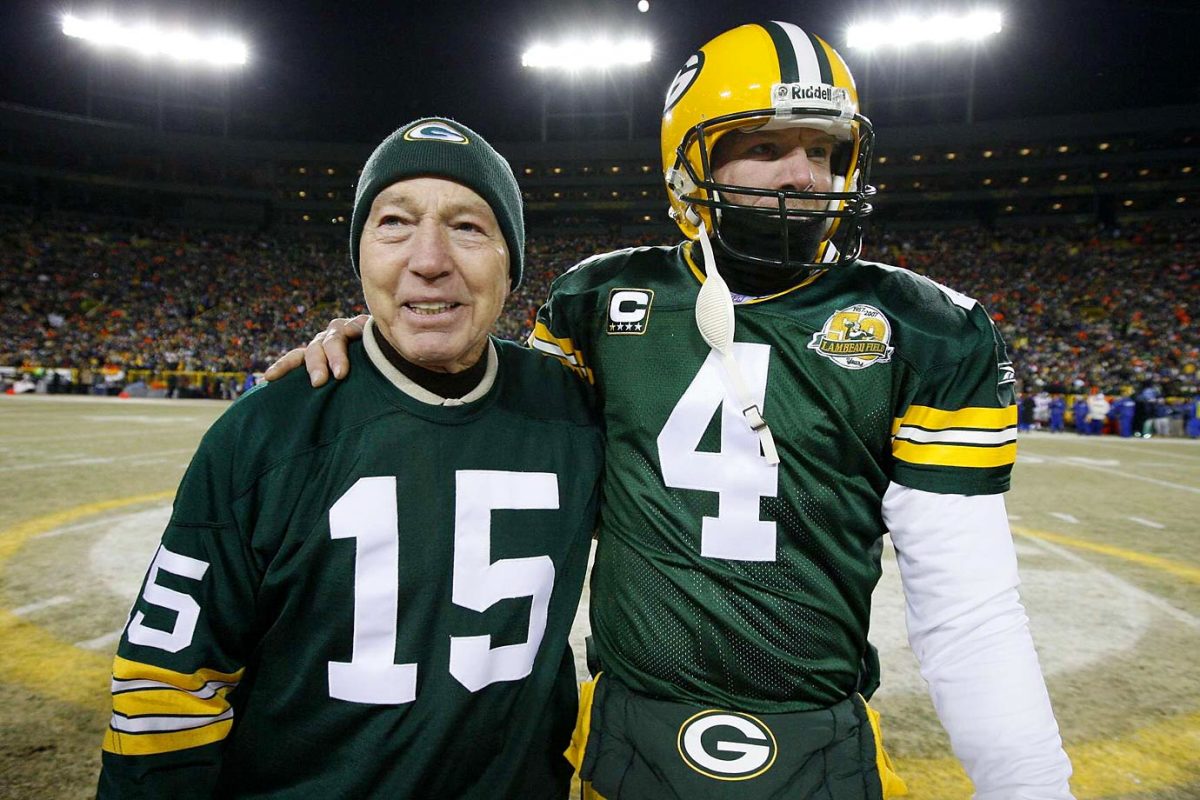
April 12, 2015, was known in Wisconsin as "Favre-Rodgers-Starr Day" because of the quarterbacks' numbers—4, 12 and 15, respectively. (Text credit: Shannon Carroll)
2013
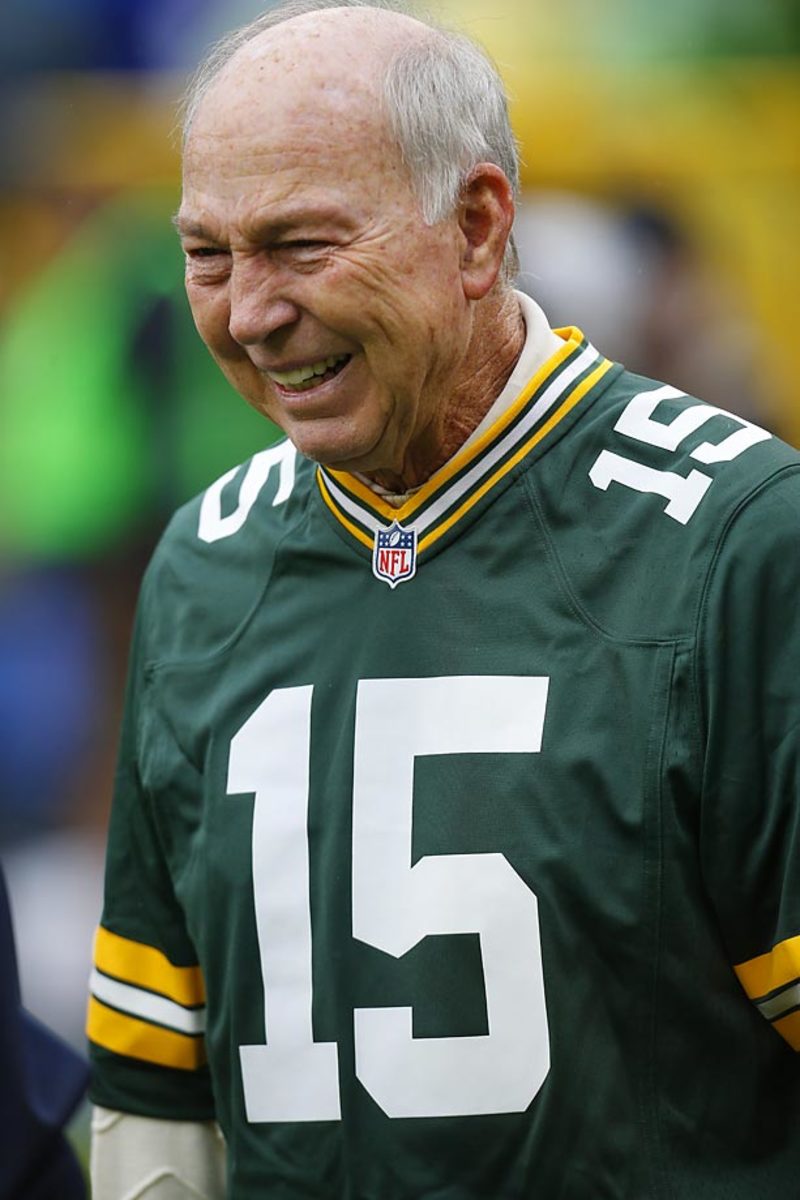
At 81, Starr was partaking in a clinical trial that uses stem cells as a possible treatment for strokes. He suffered two strokes and a mild heart attack in September 2014. (Text credit: Shannon Carroll)
2014
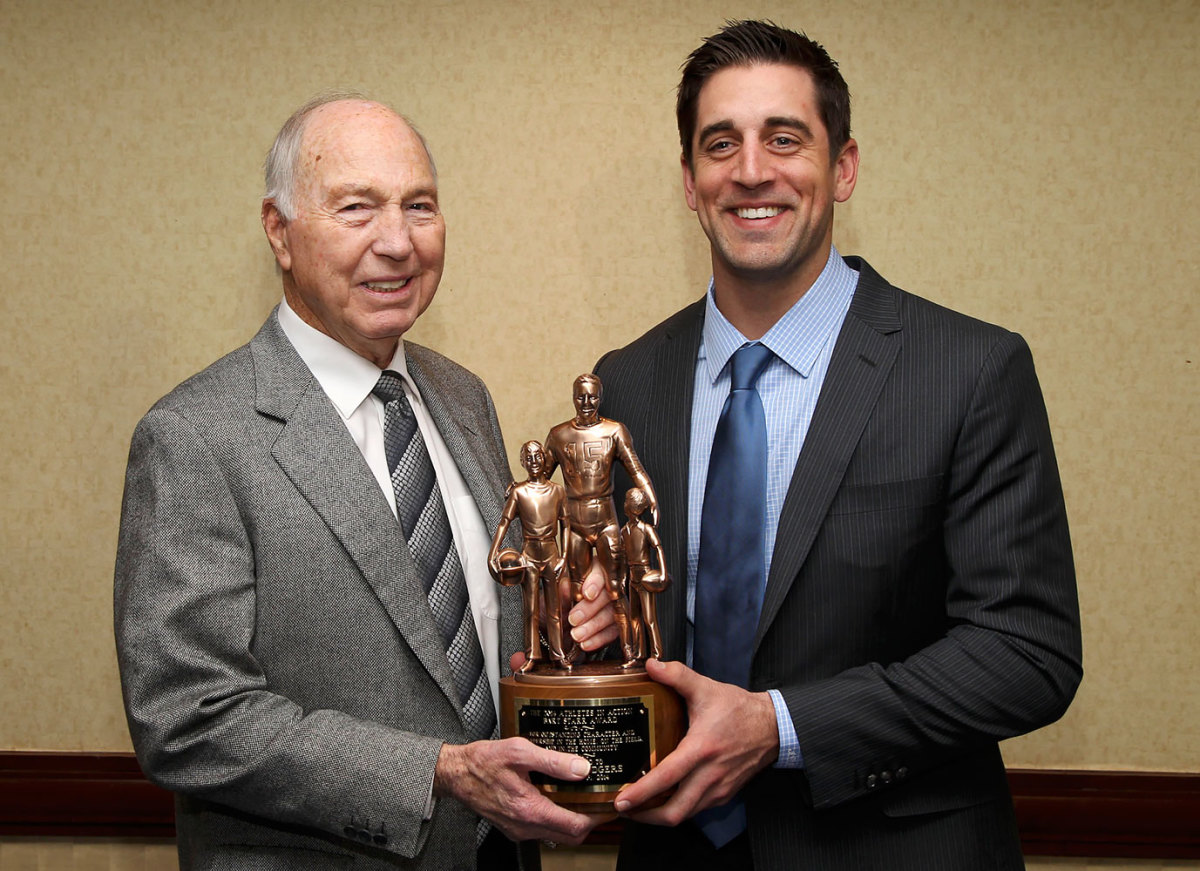
Bart Starr poses with Aaron Rodgers, recipient of the Athletes in Action/Bart Starr Award — given annually to an NFL player who best exemplifies outstanding character and leadership in the home, on the field and in the community.
2015
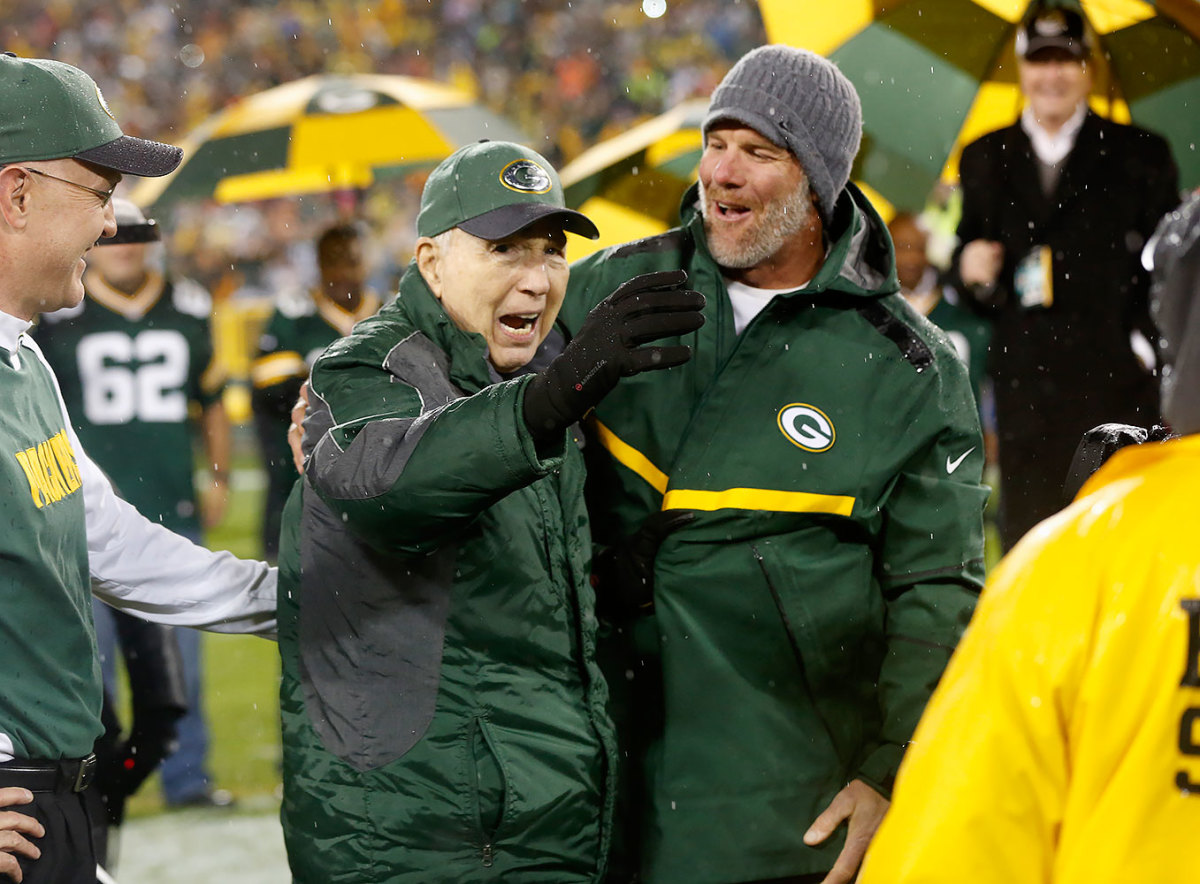
Brett Favre smiles with Bart Starr during a halftime ceremony to retire Favre’s No. 4 at Lambeau Field. Starr’s No. 15 was retired by the team in 1973.
